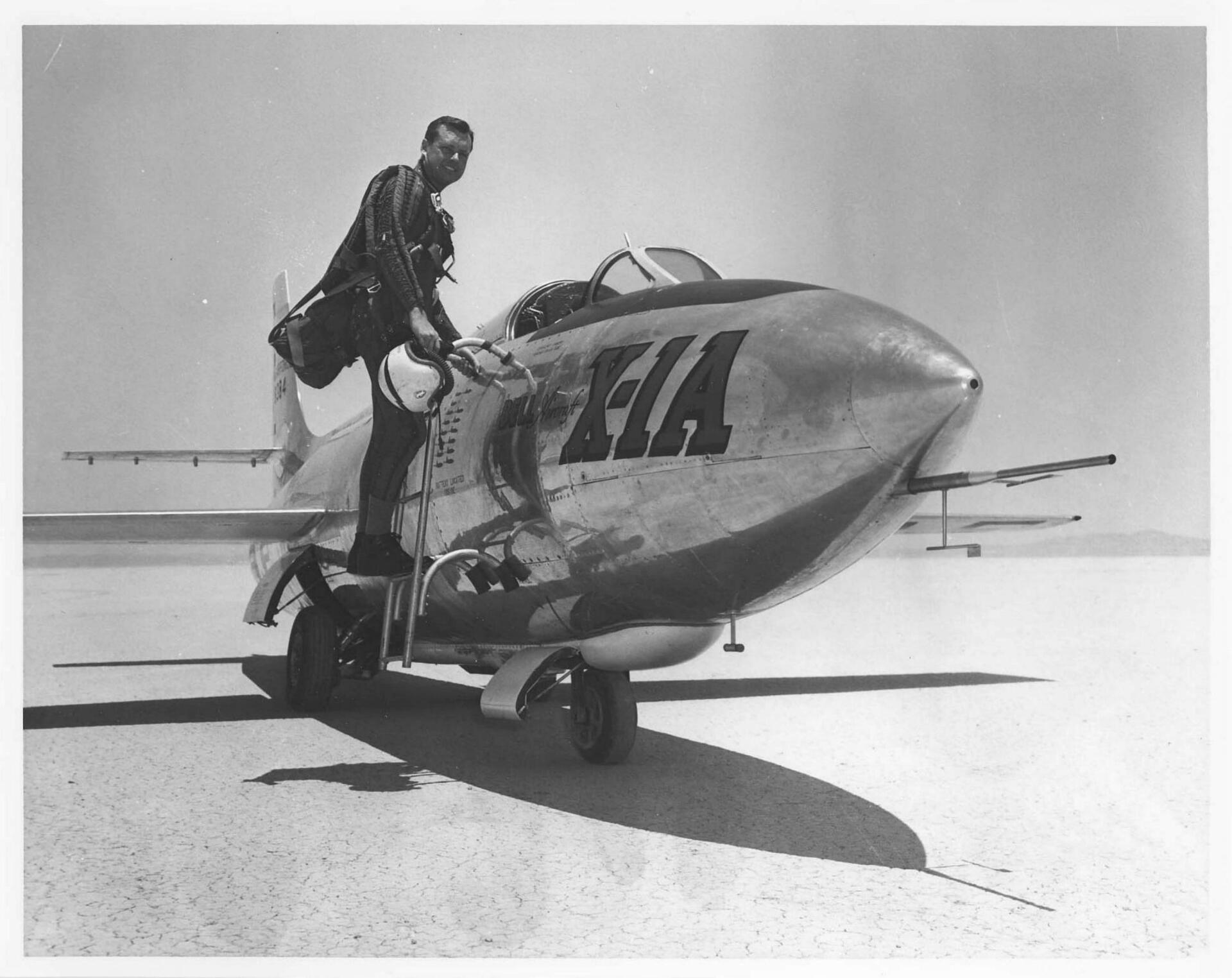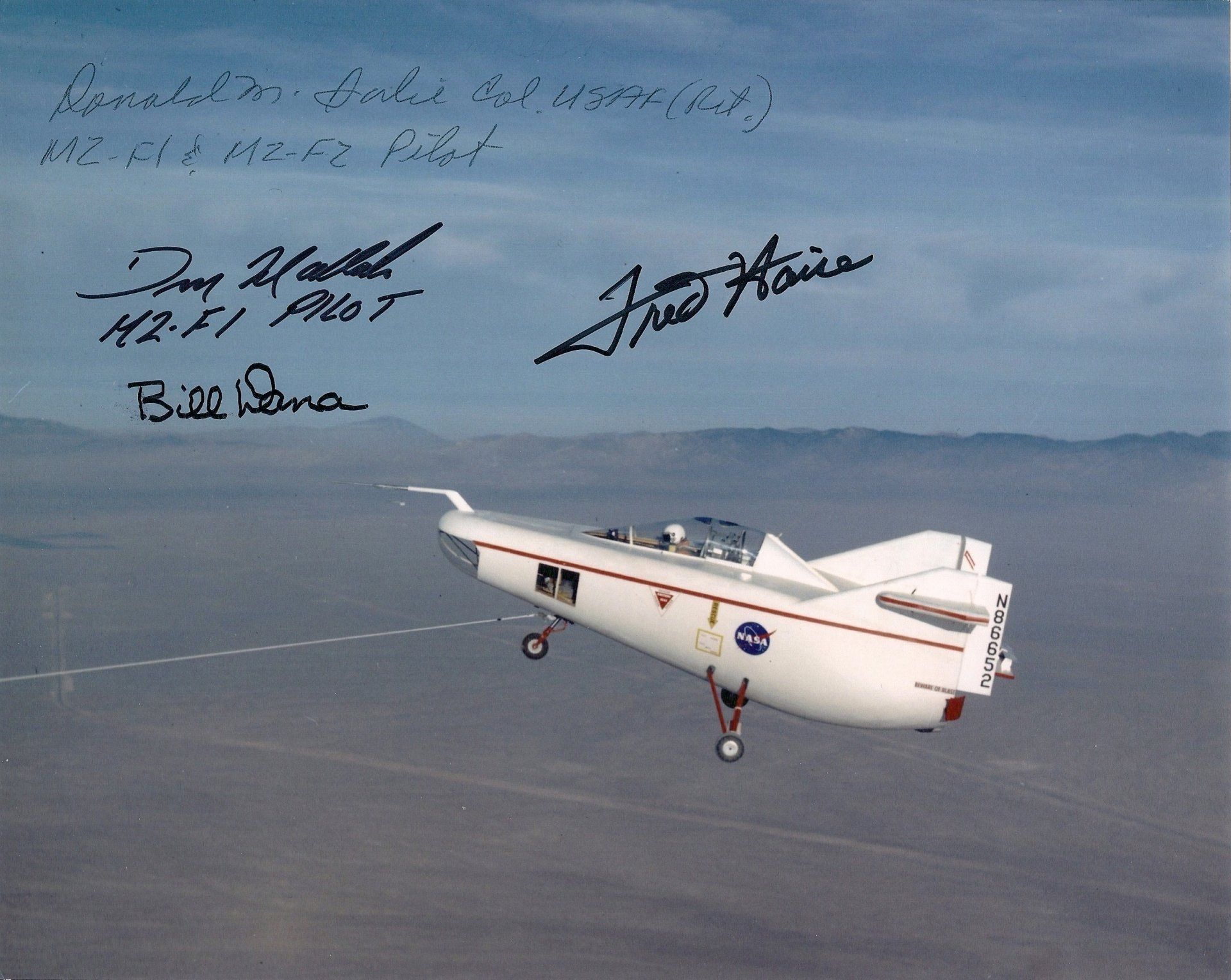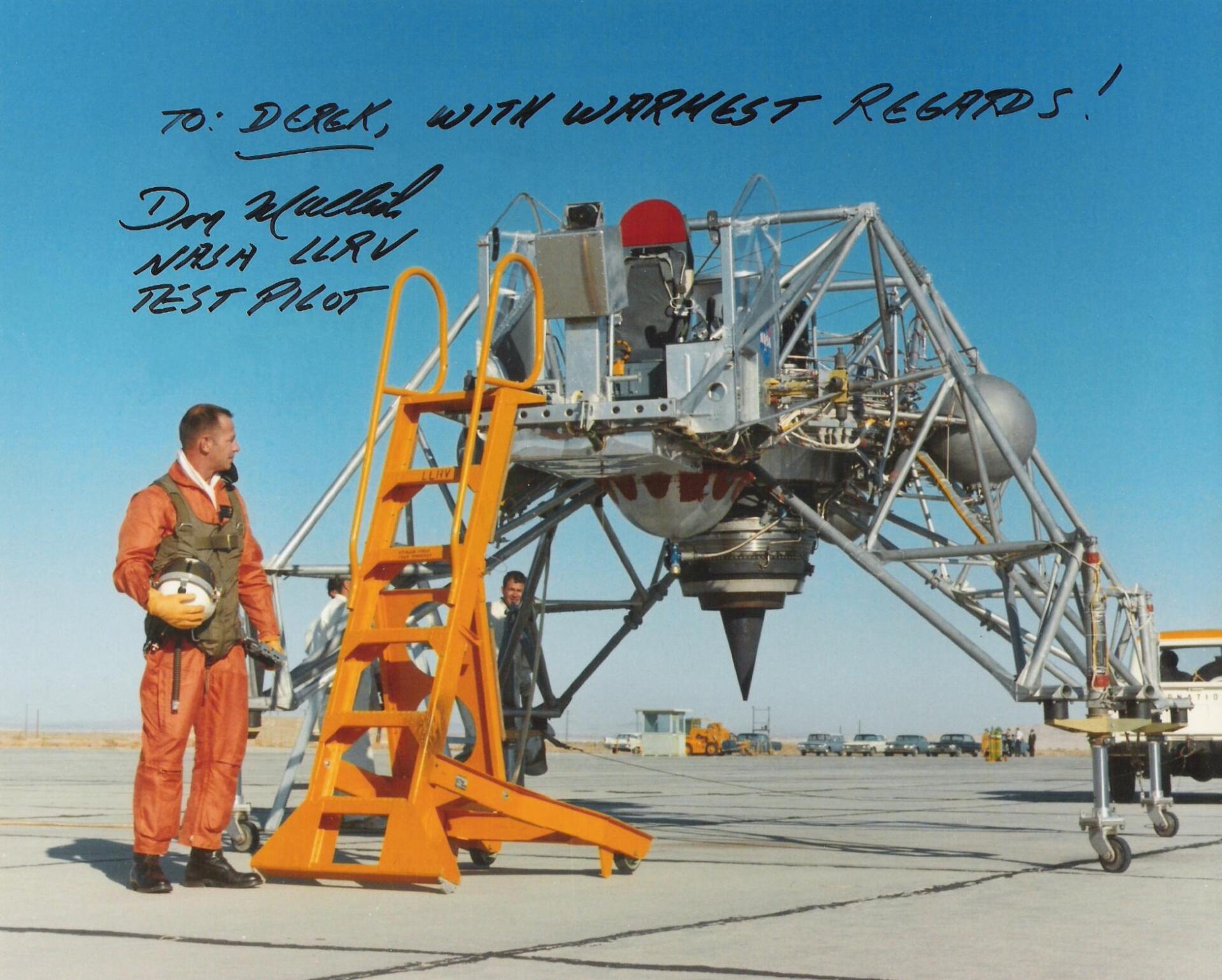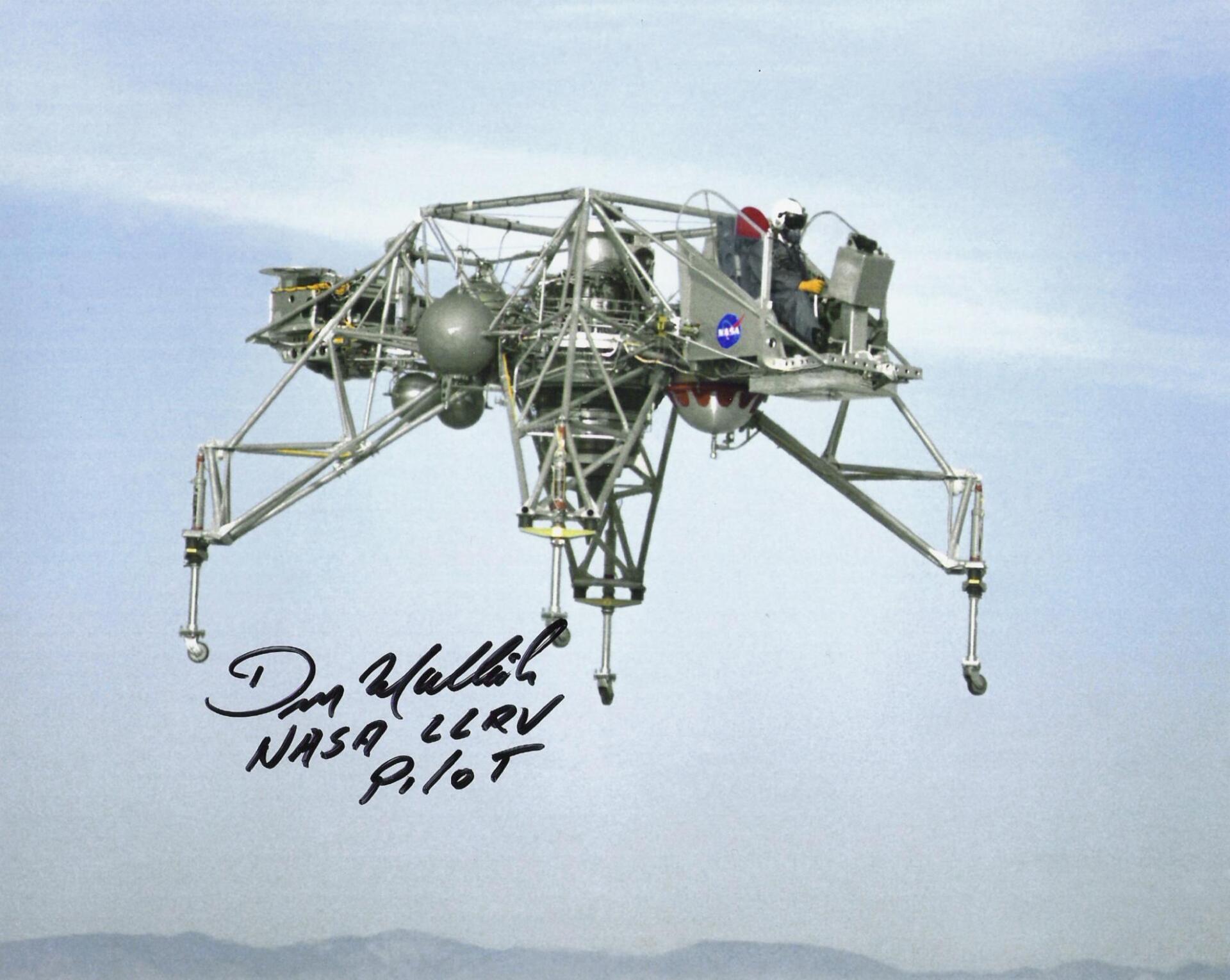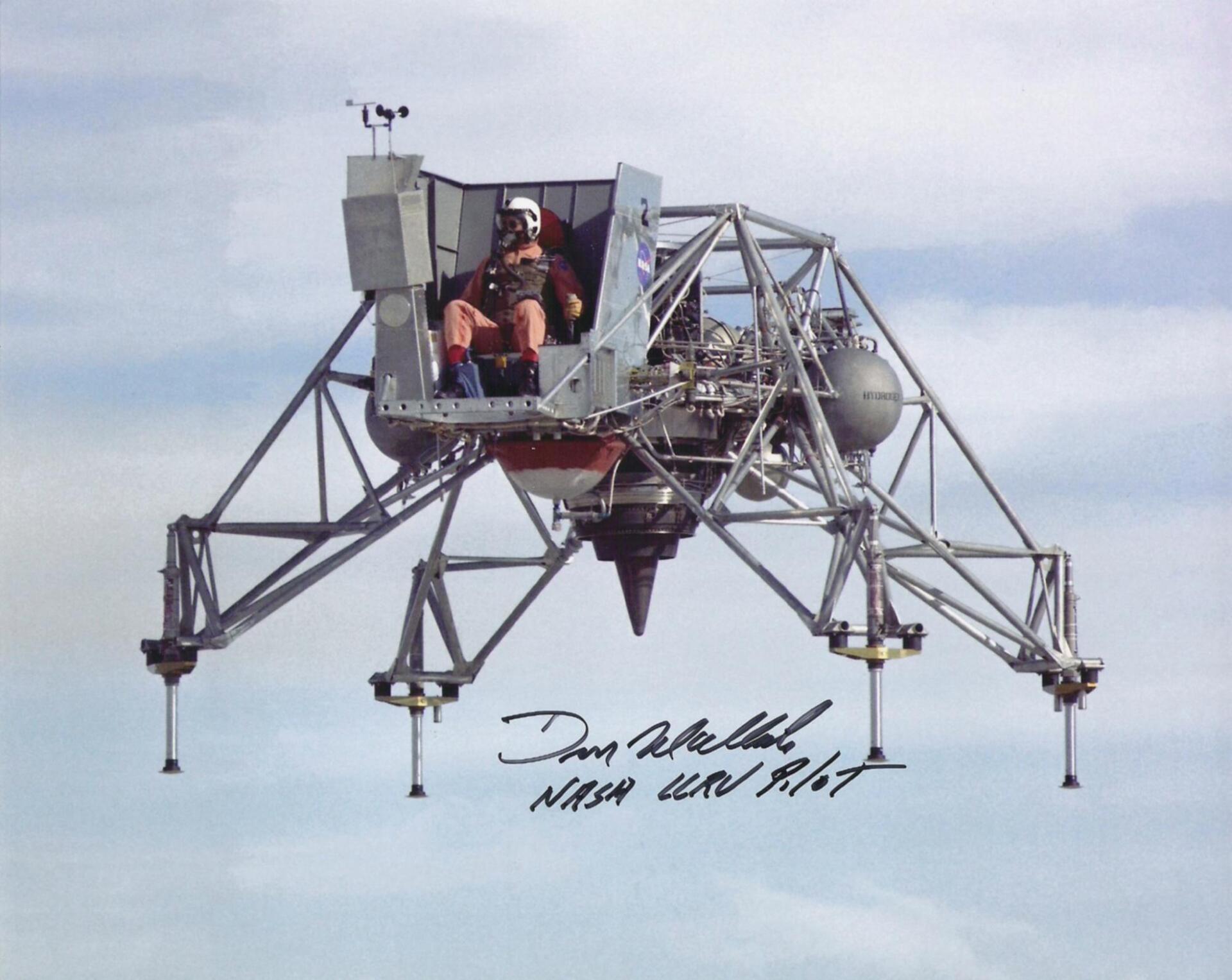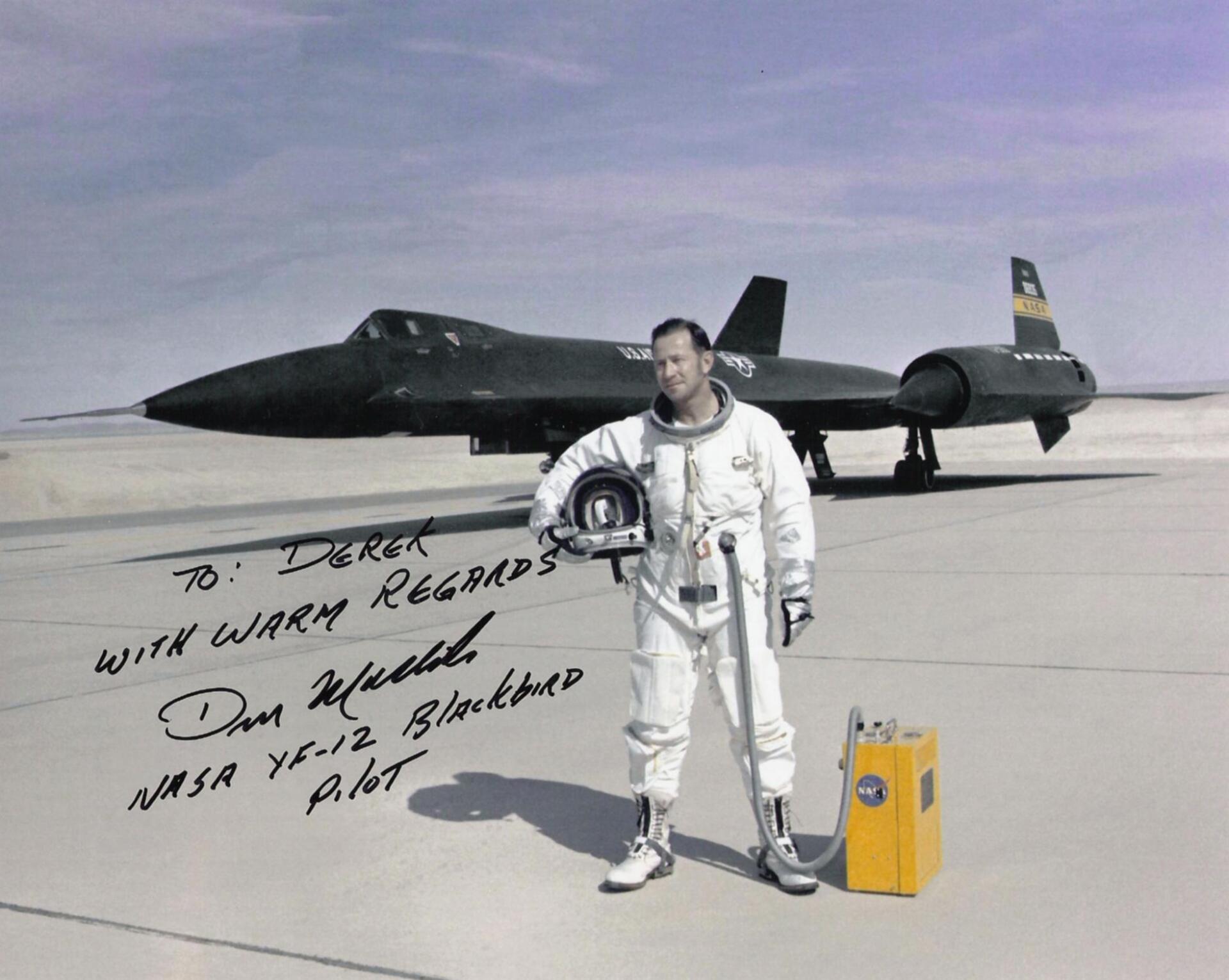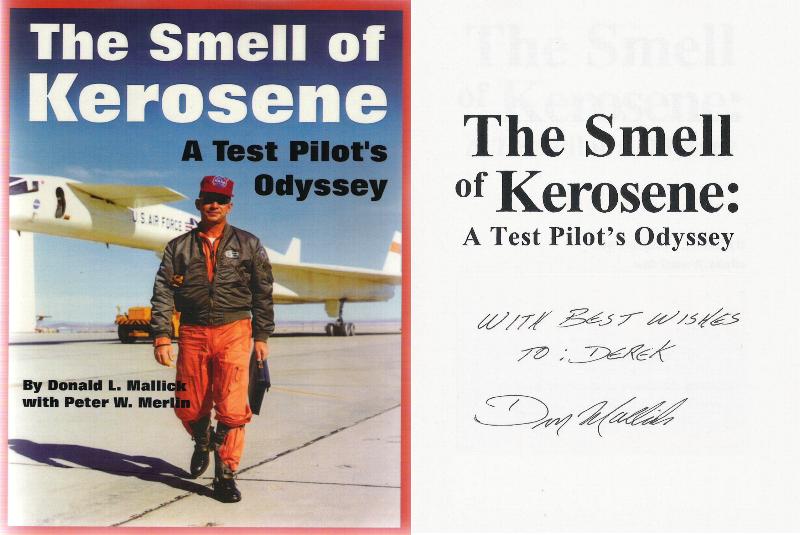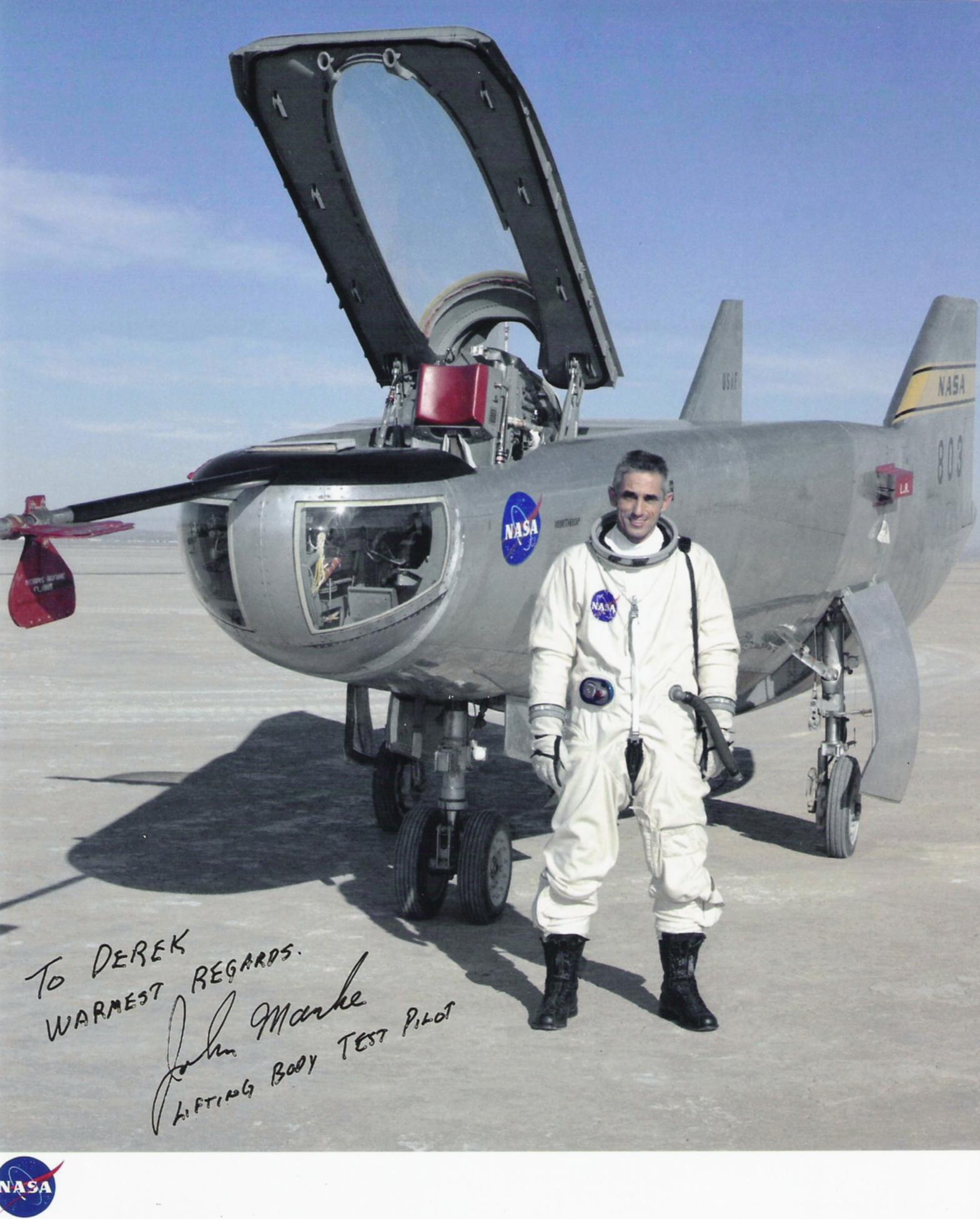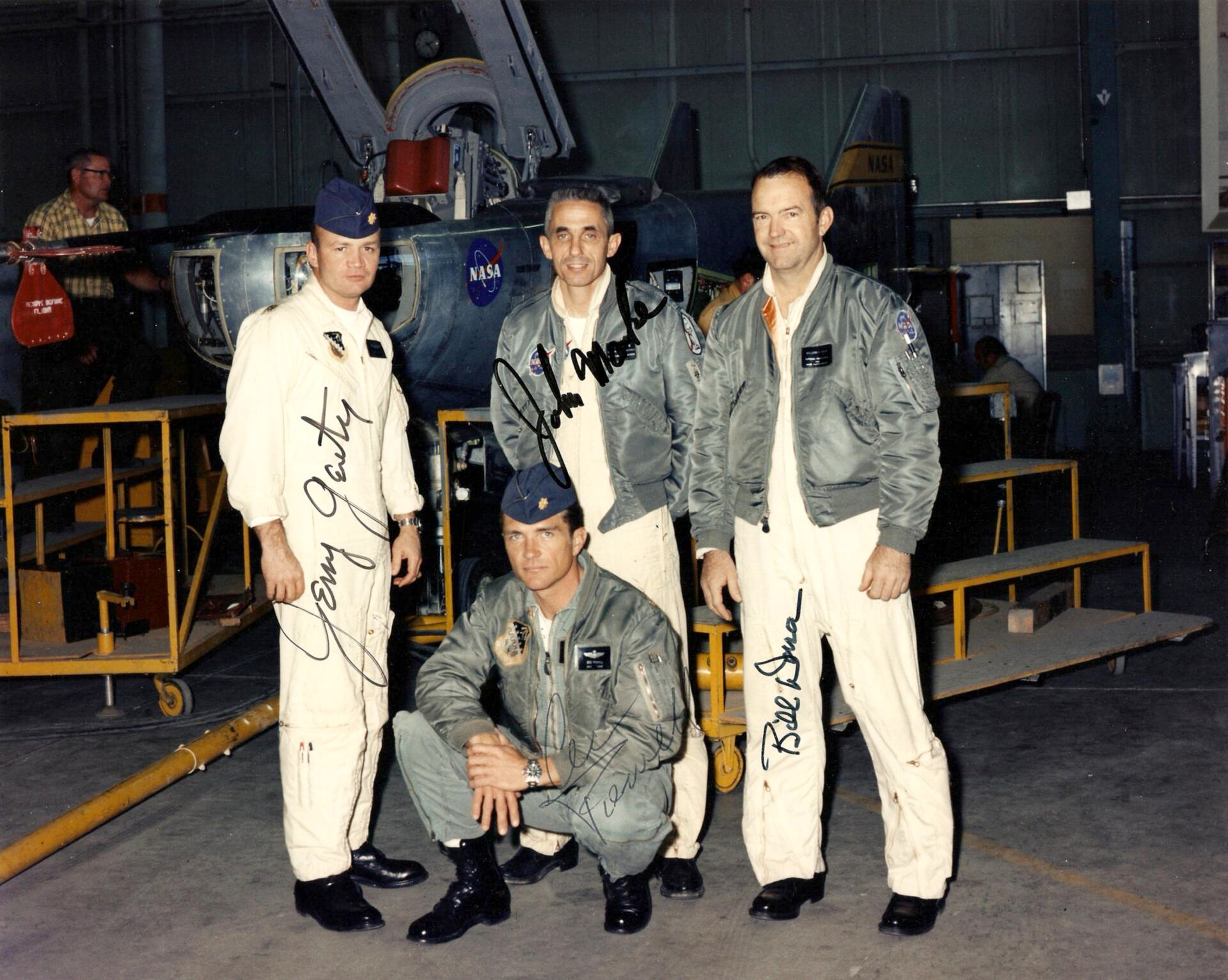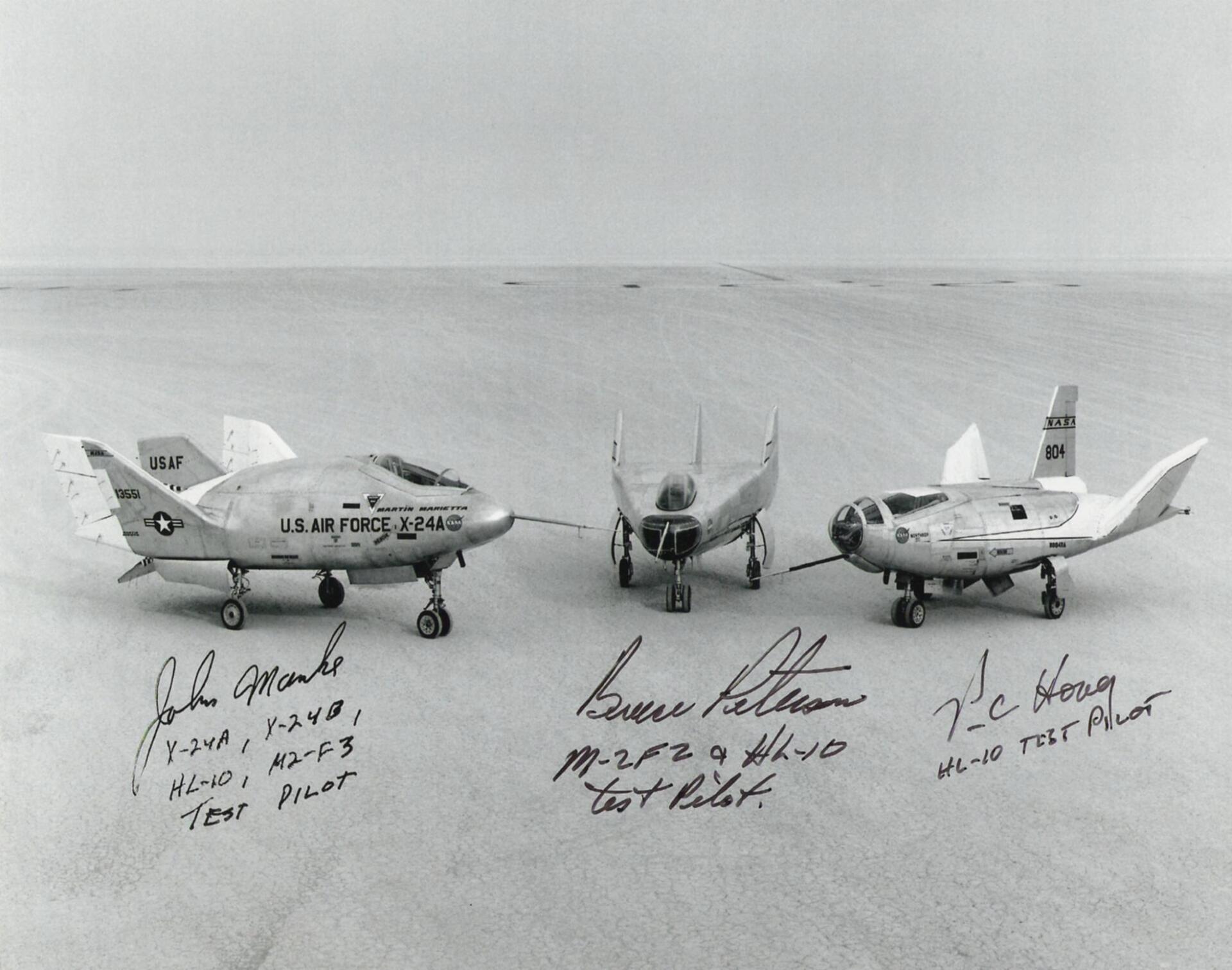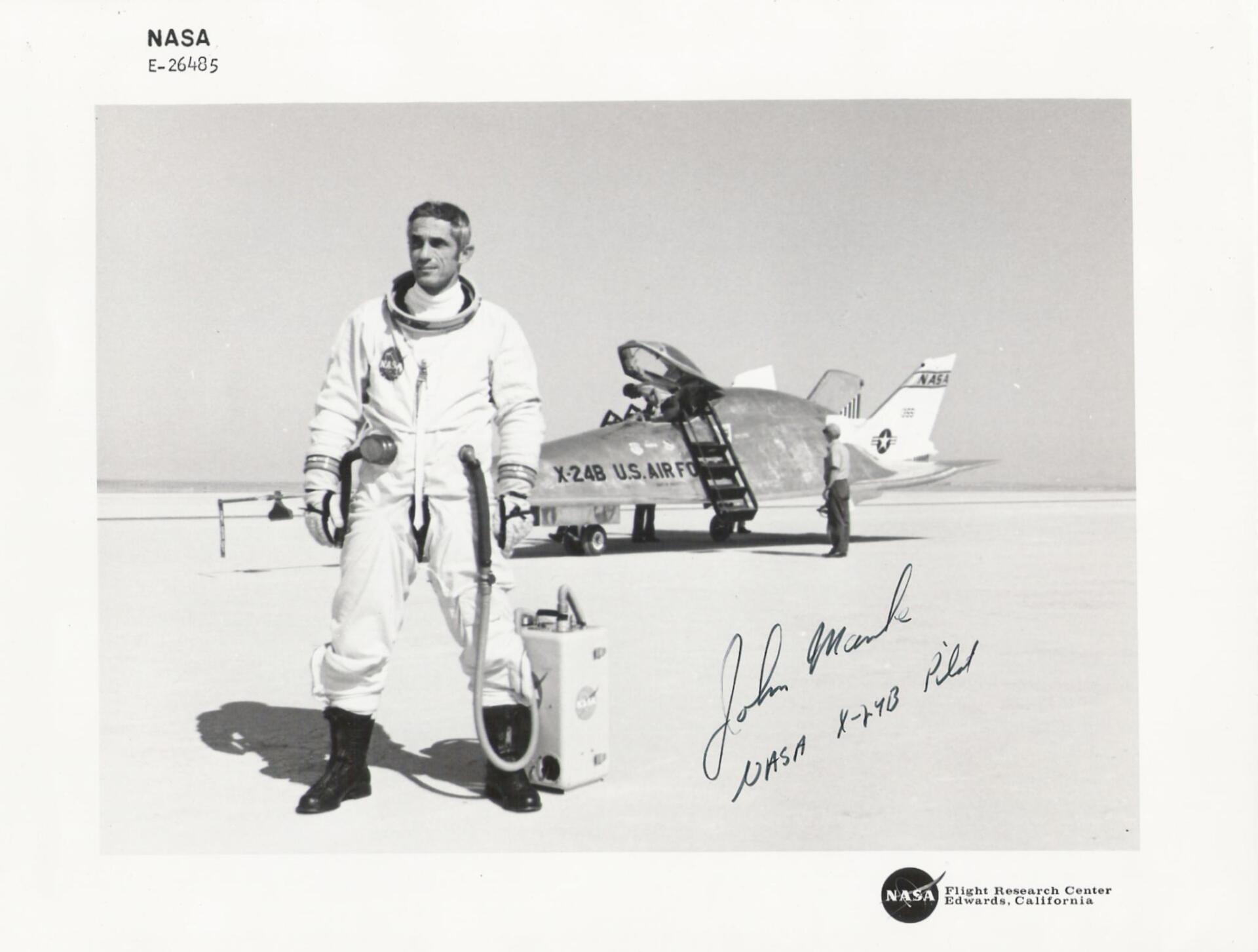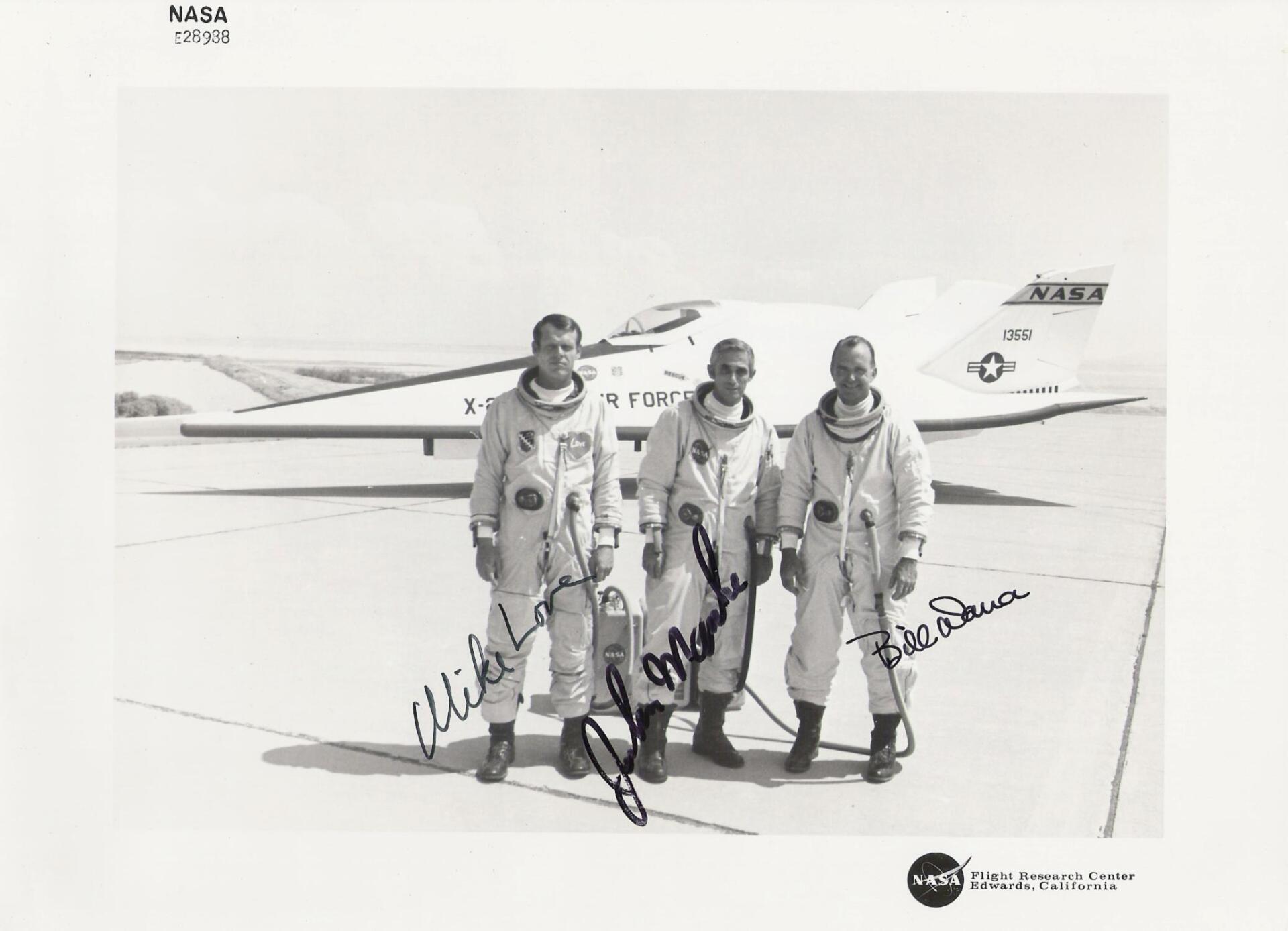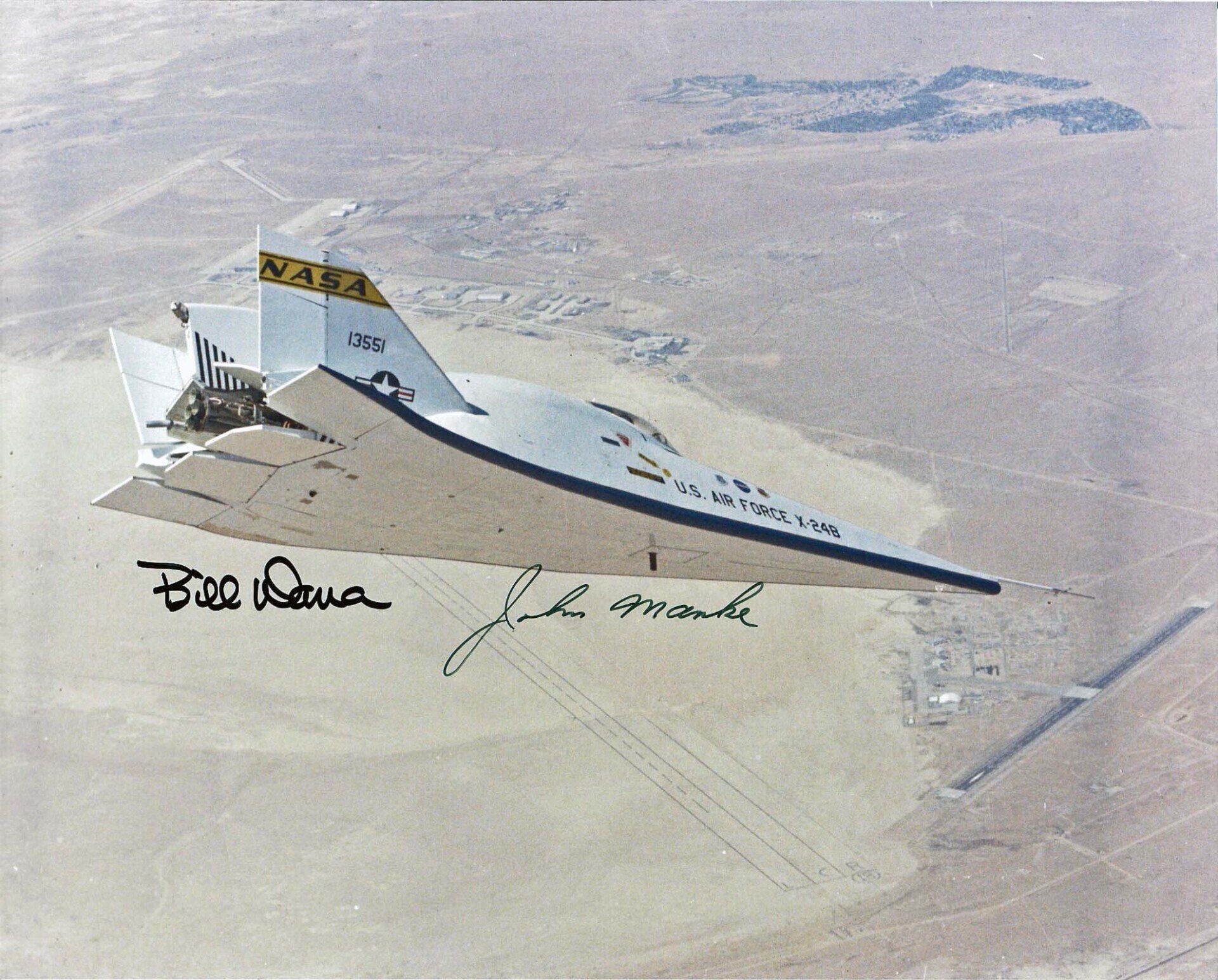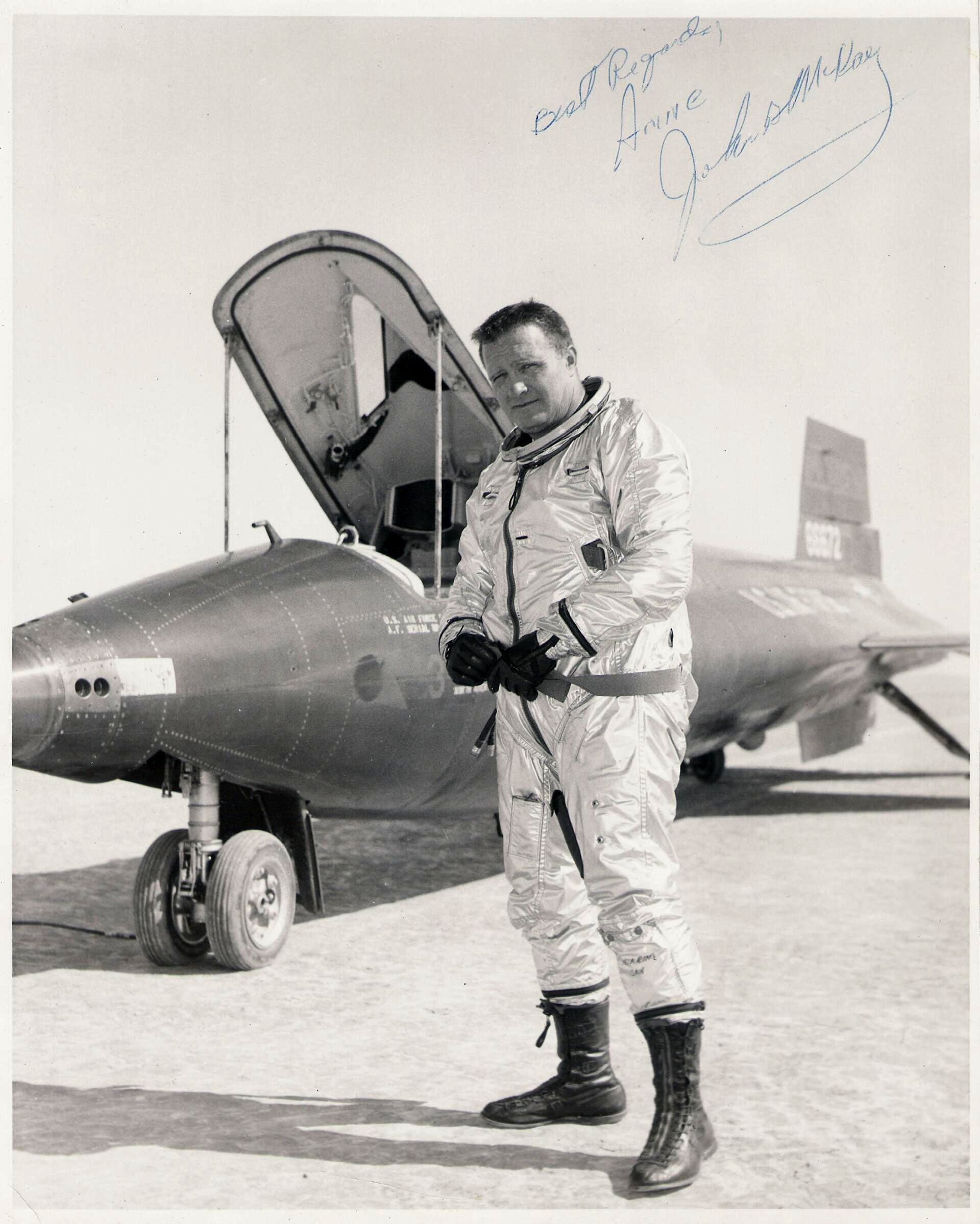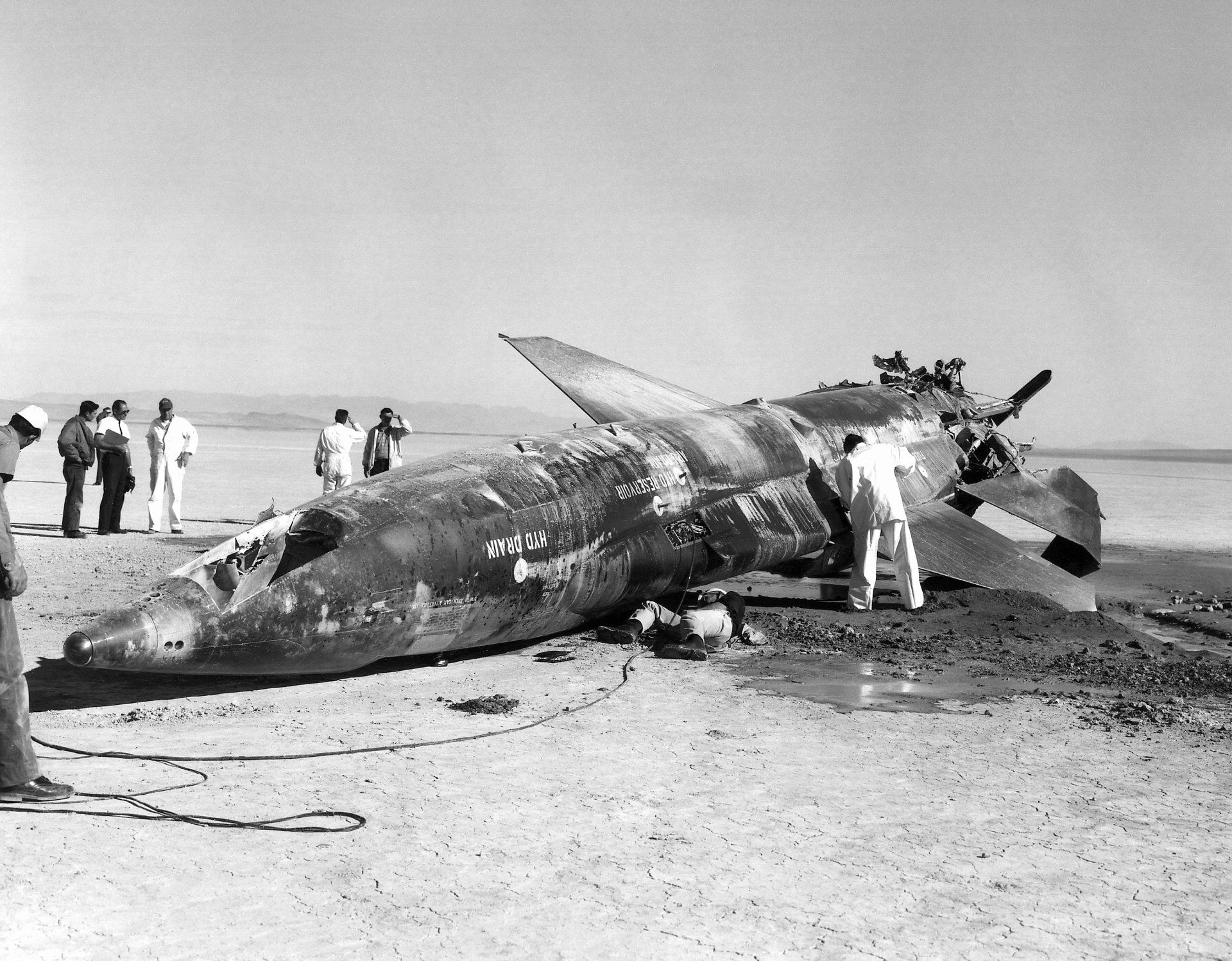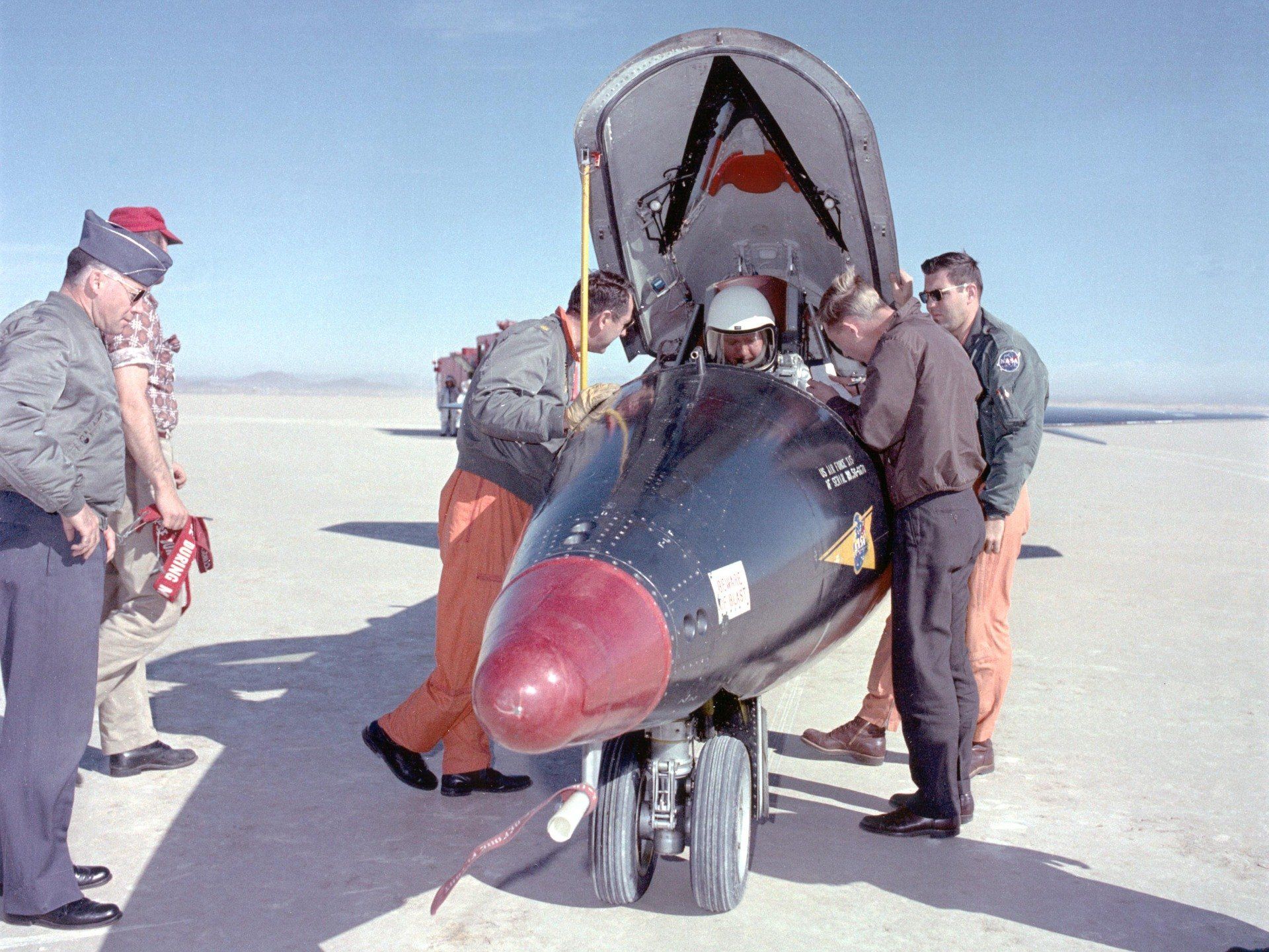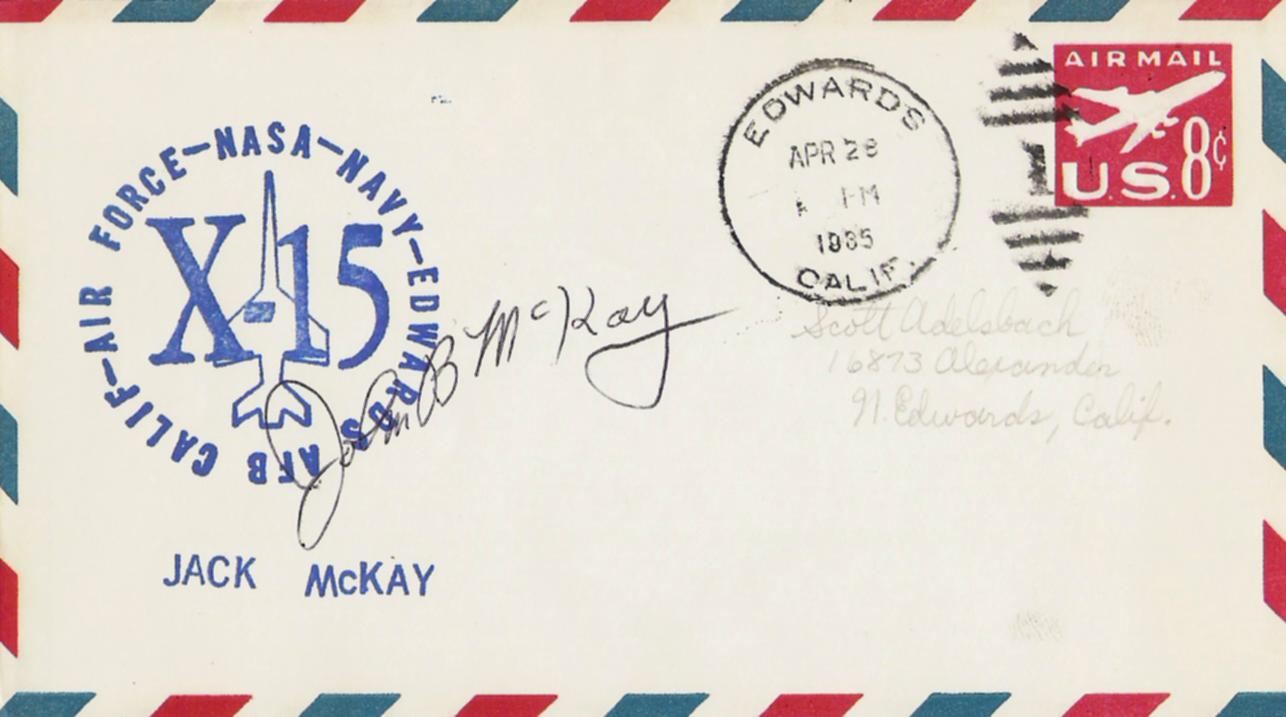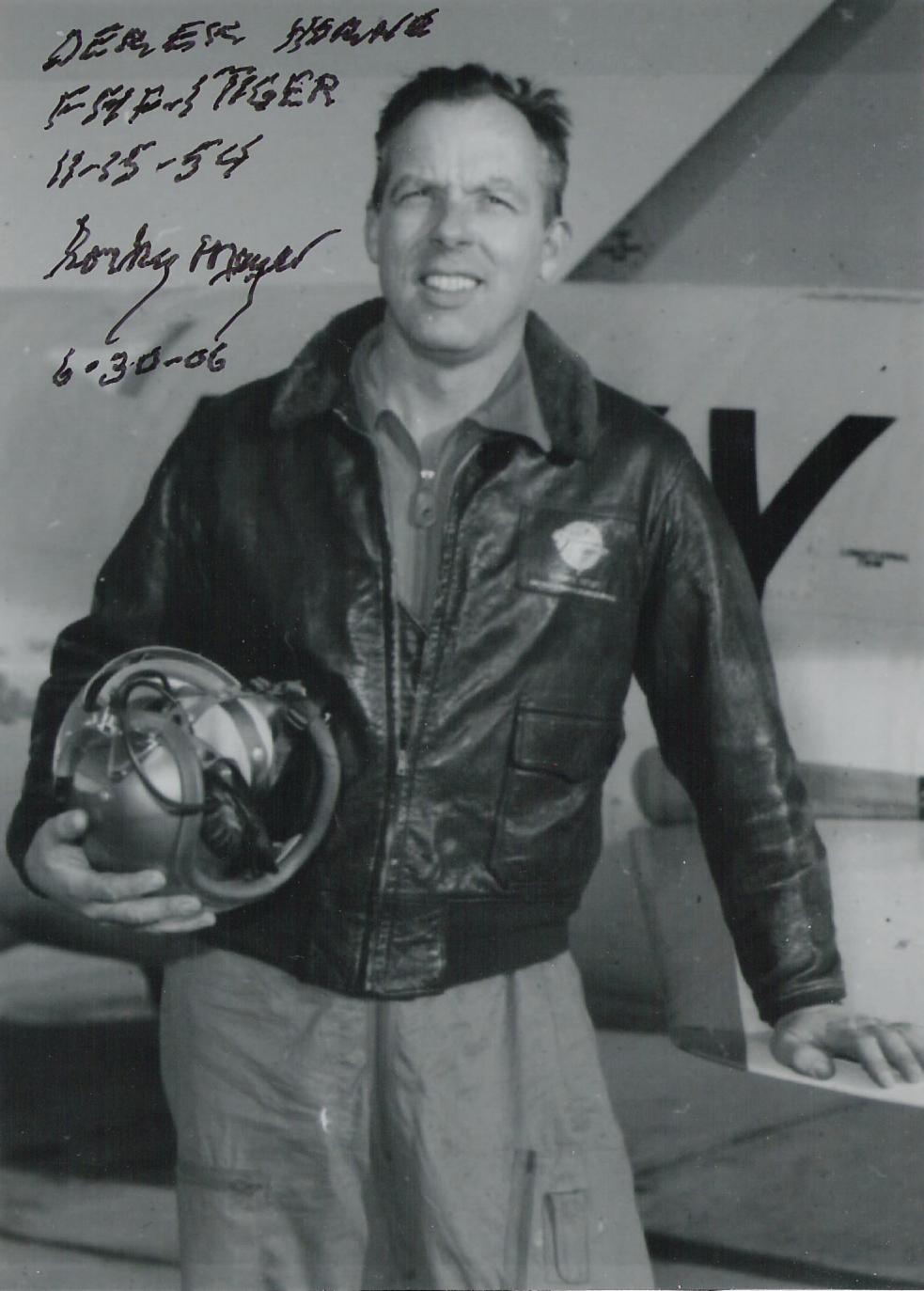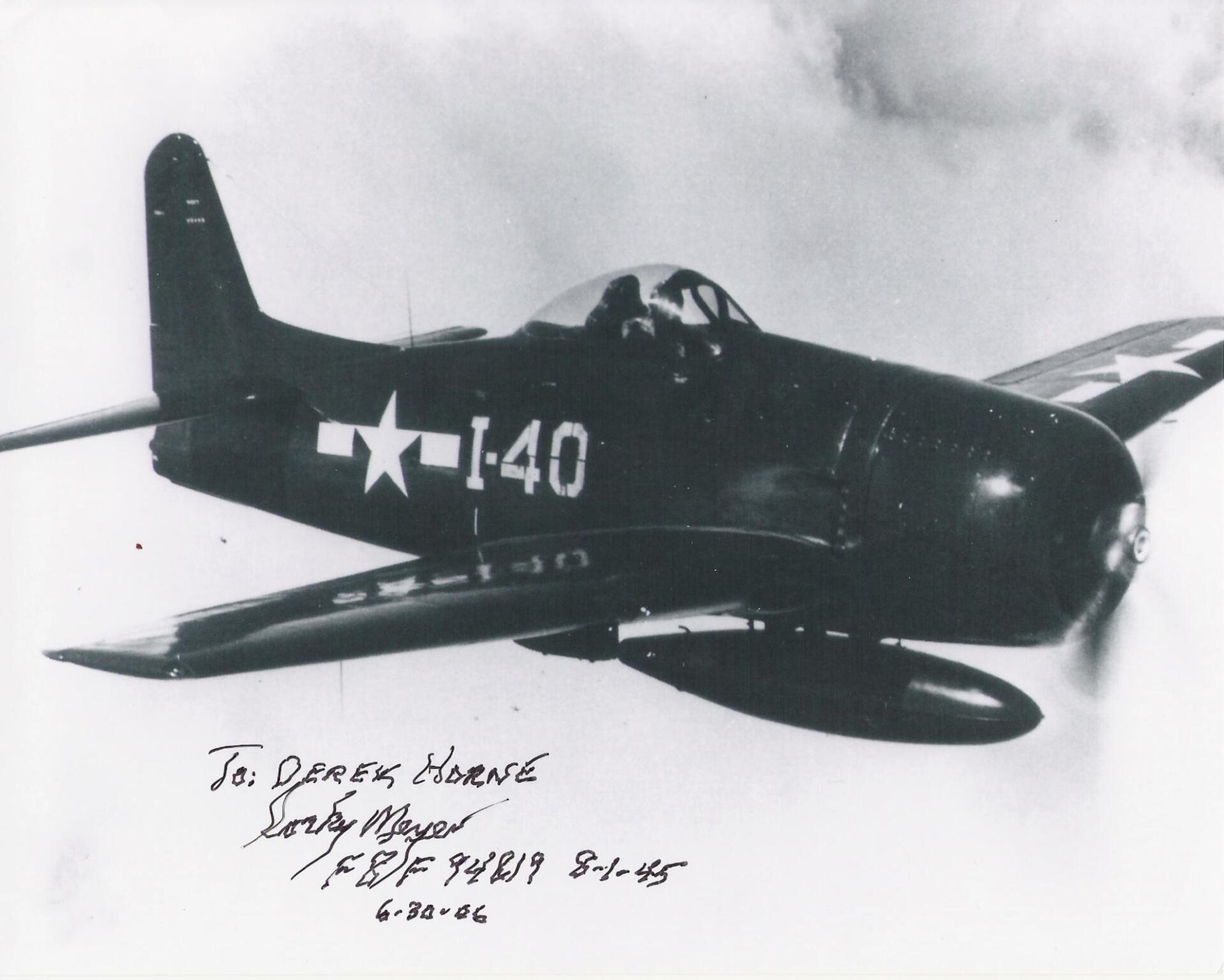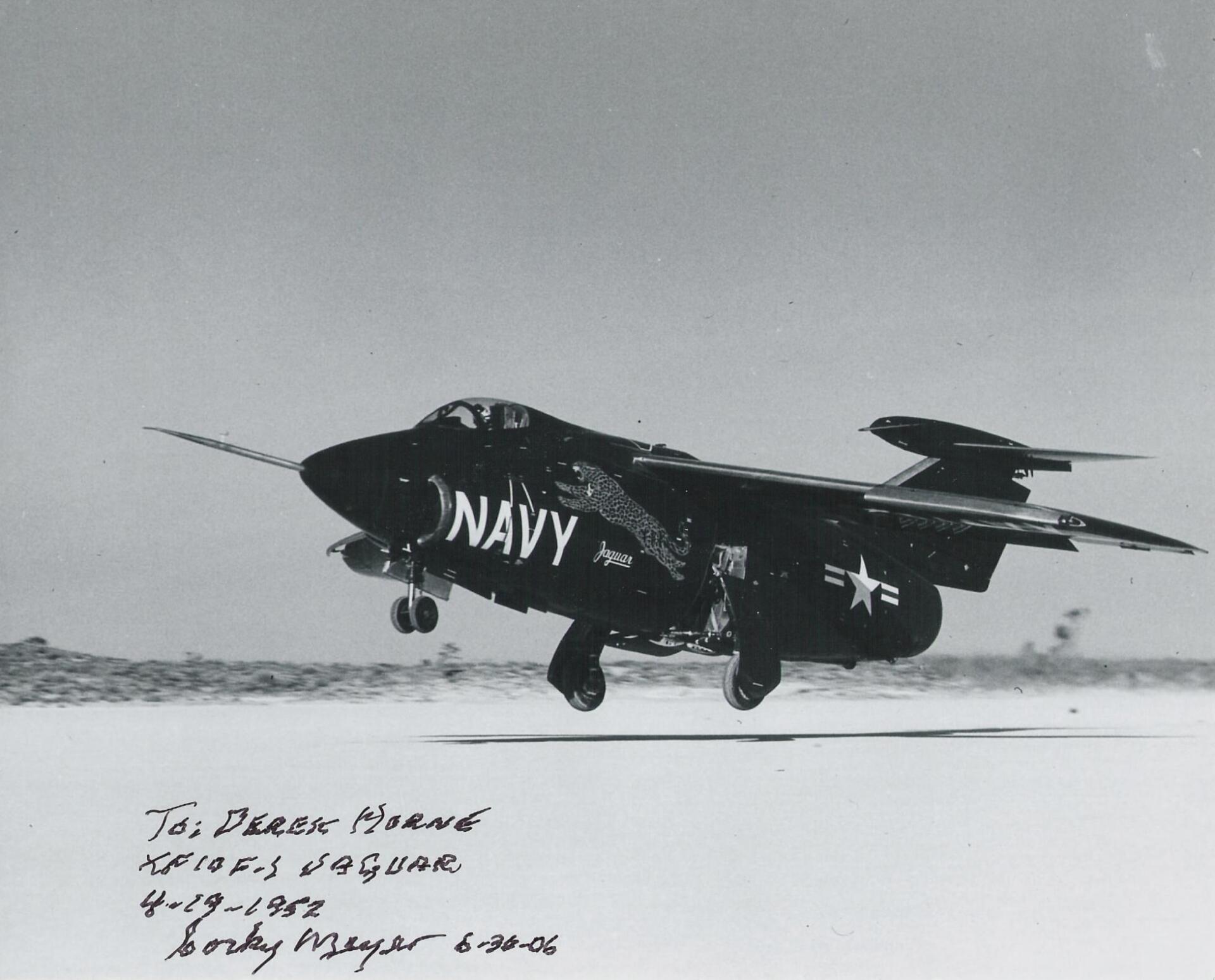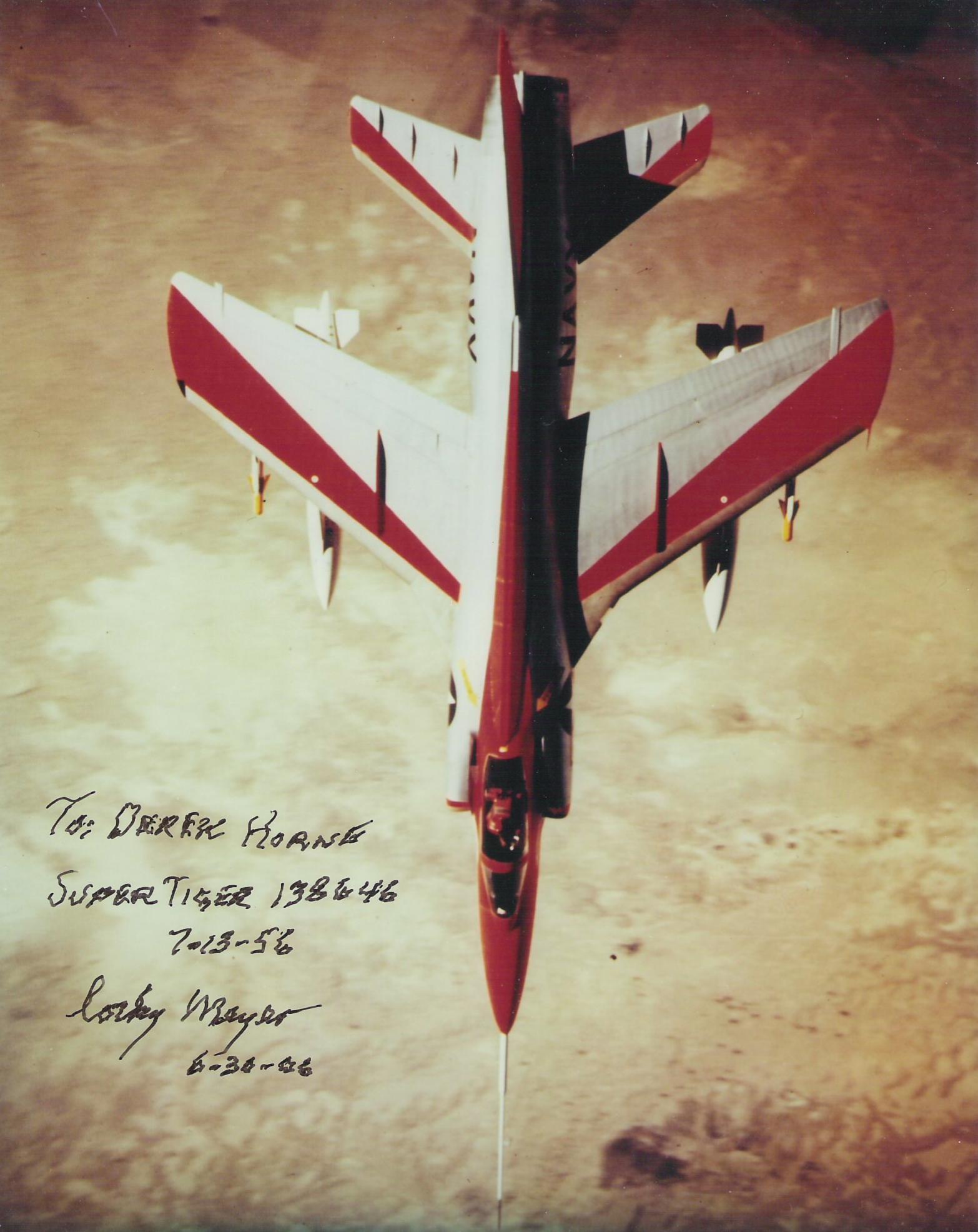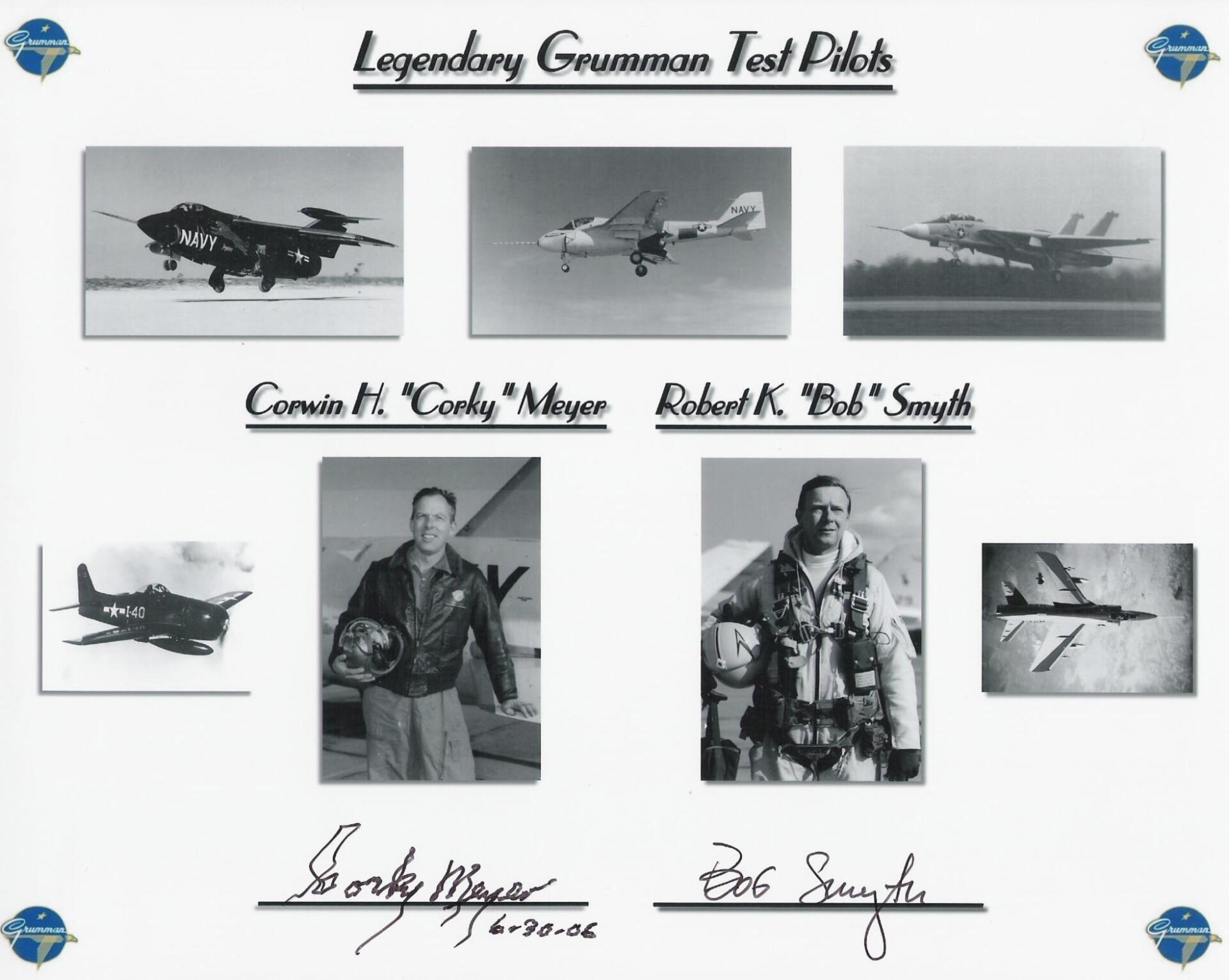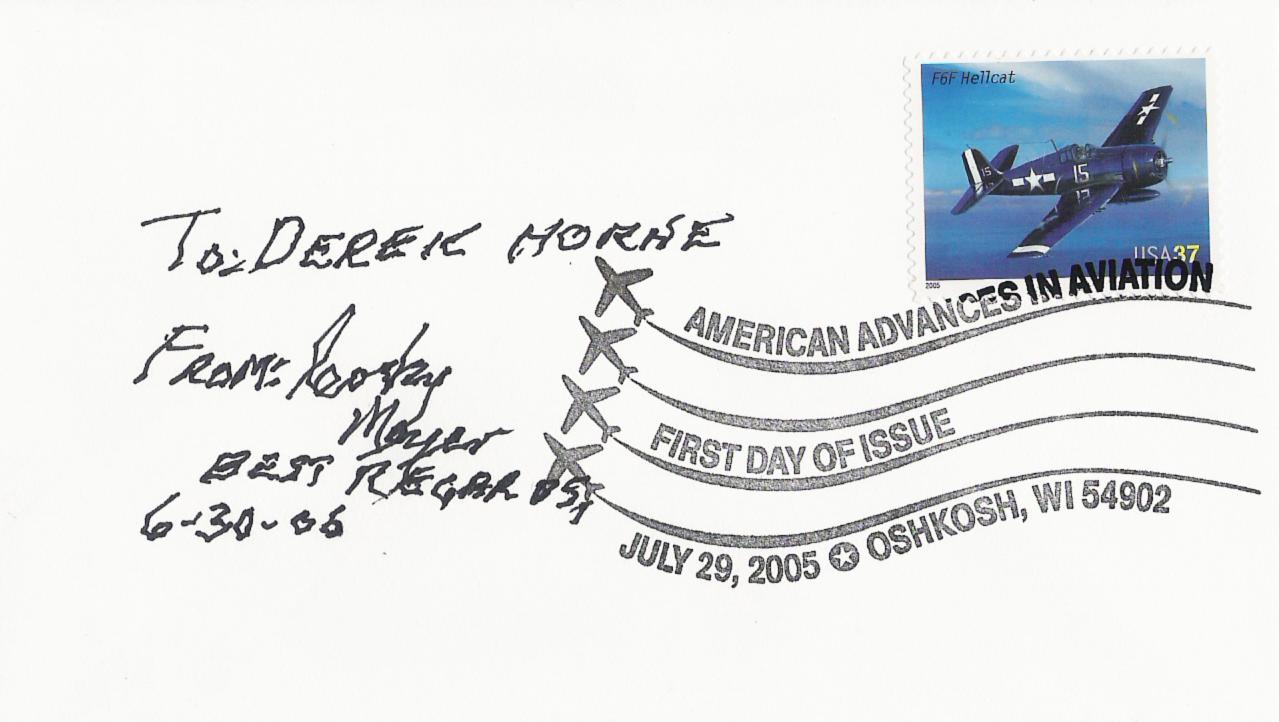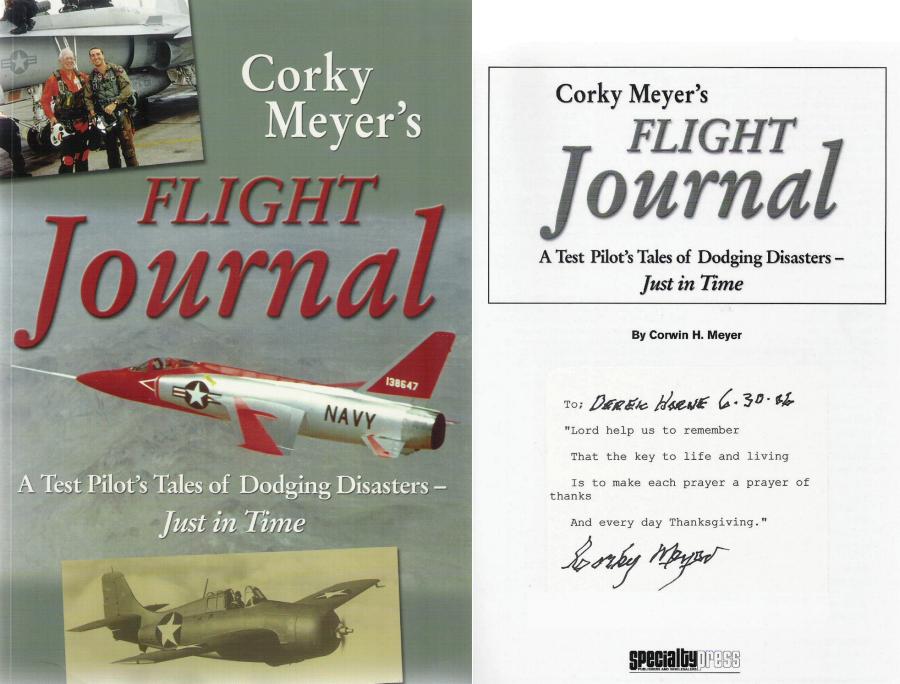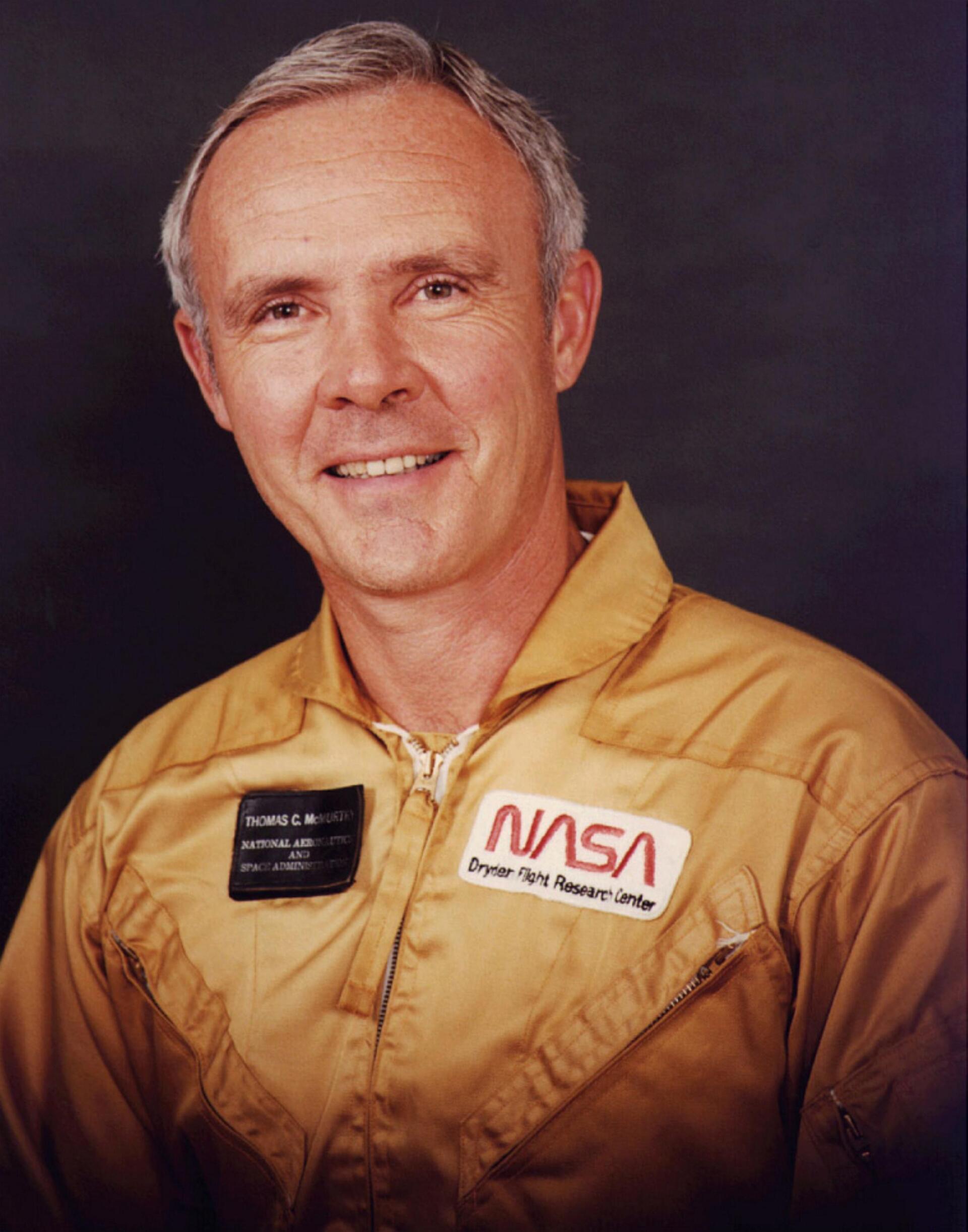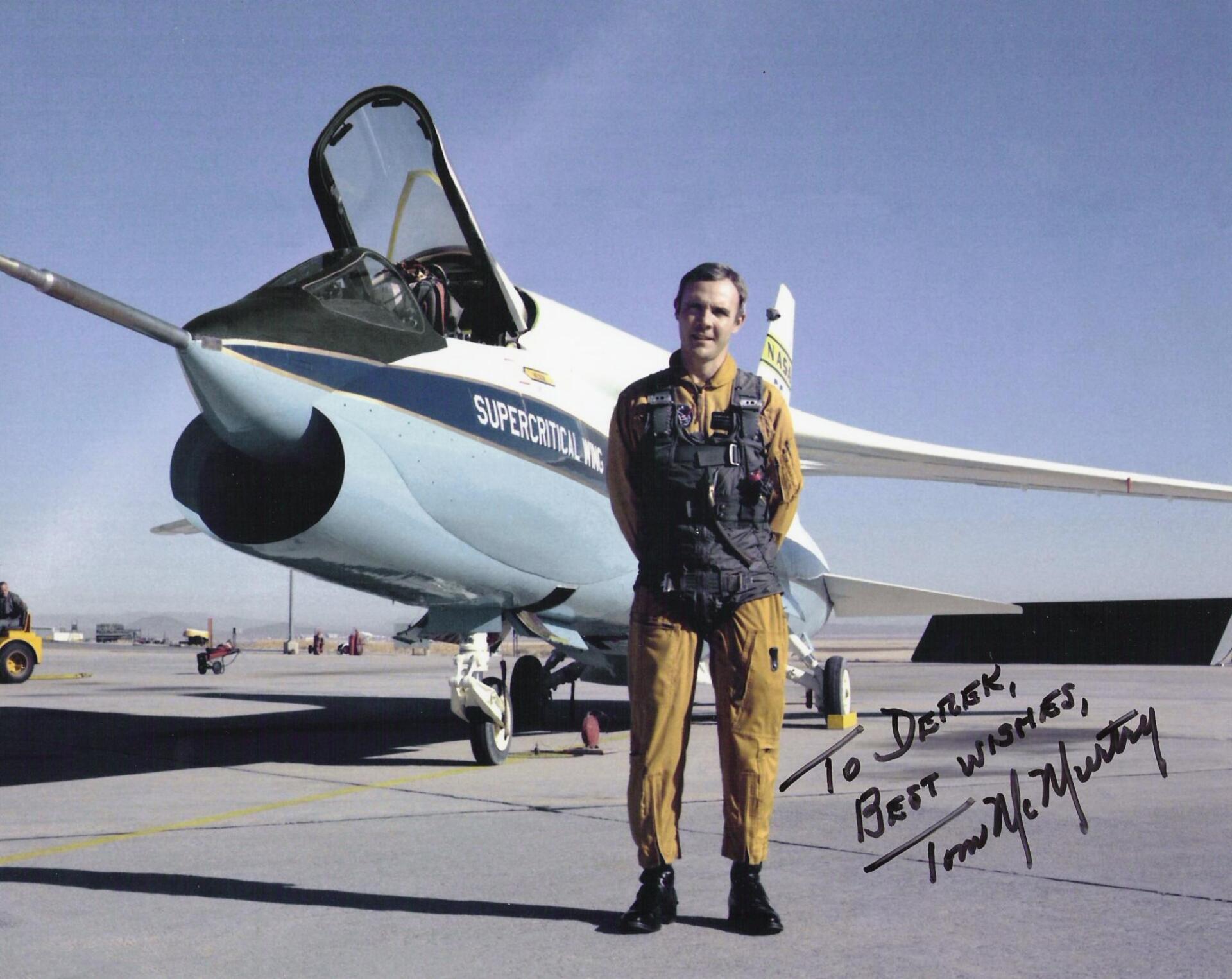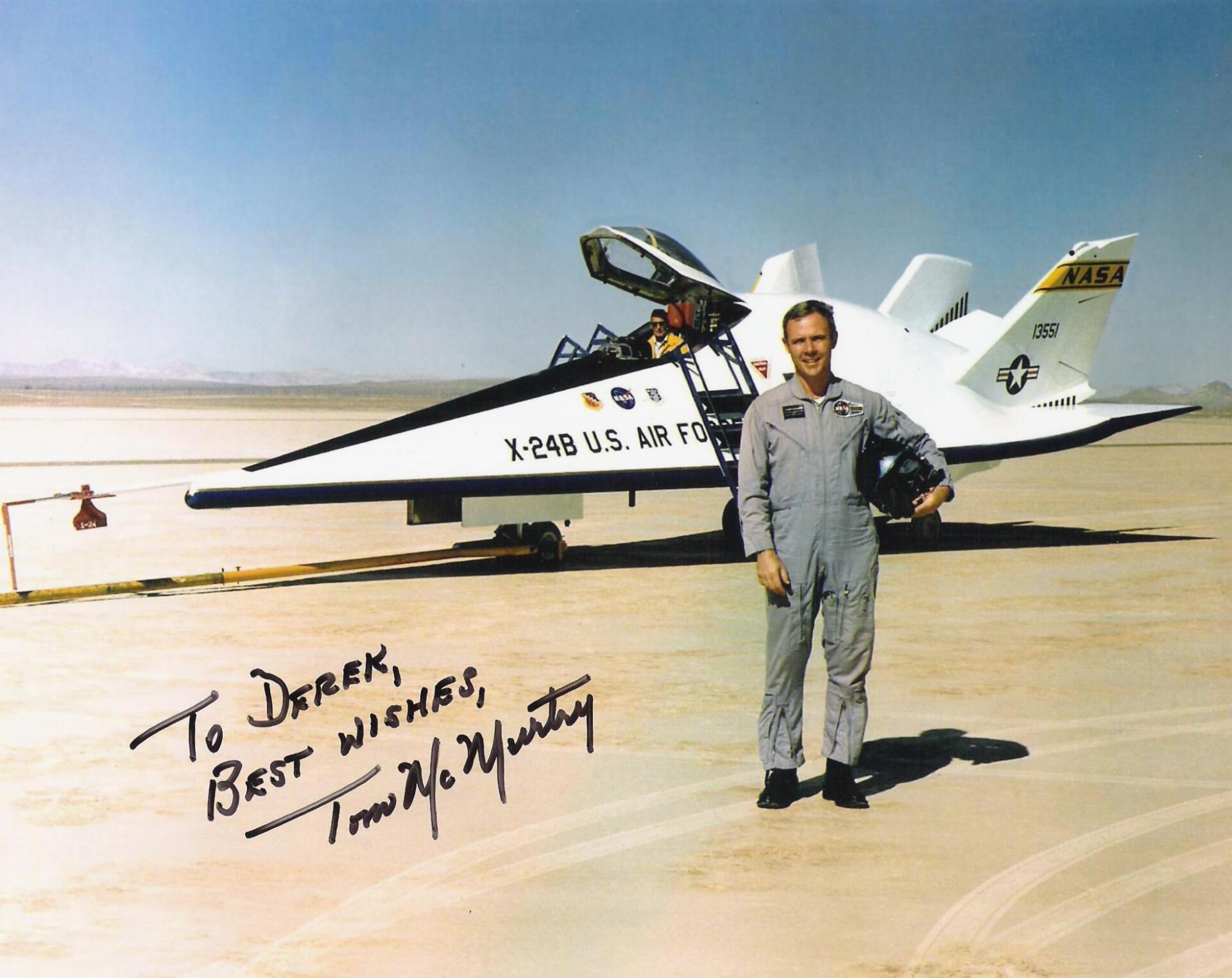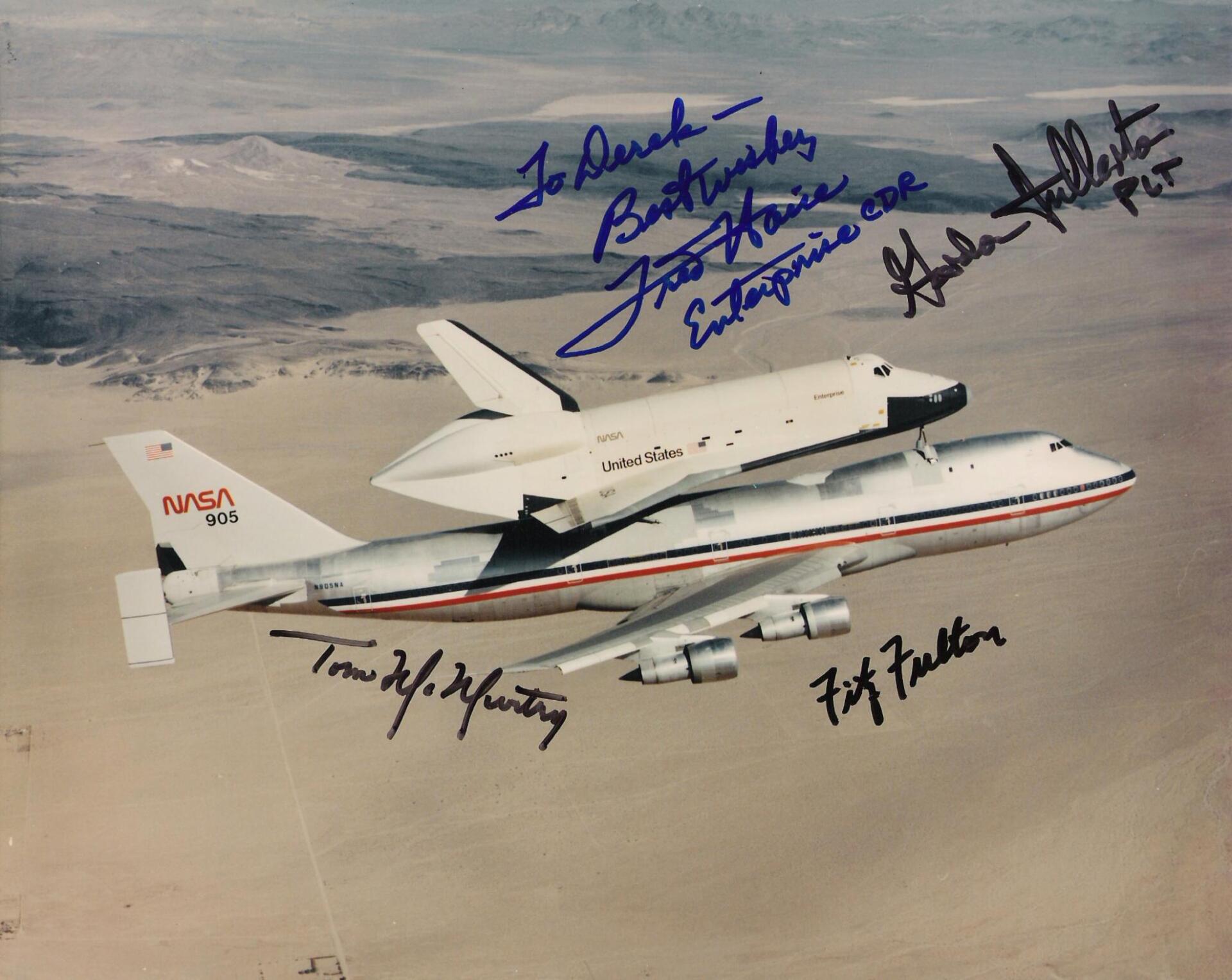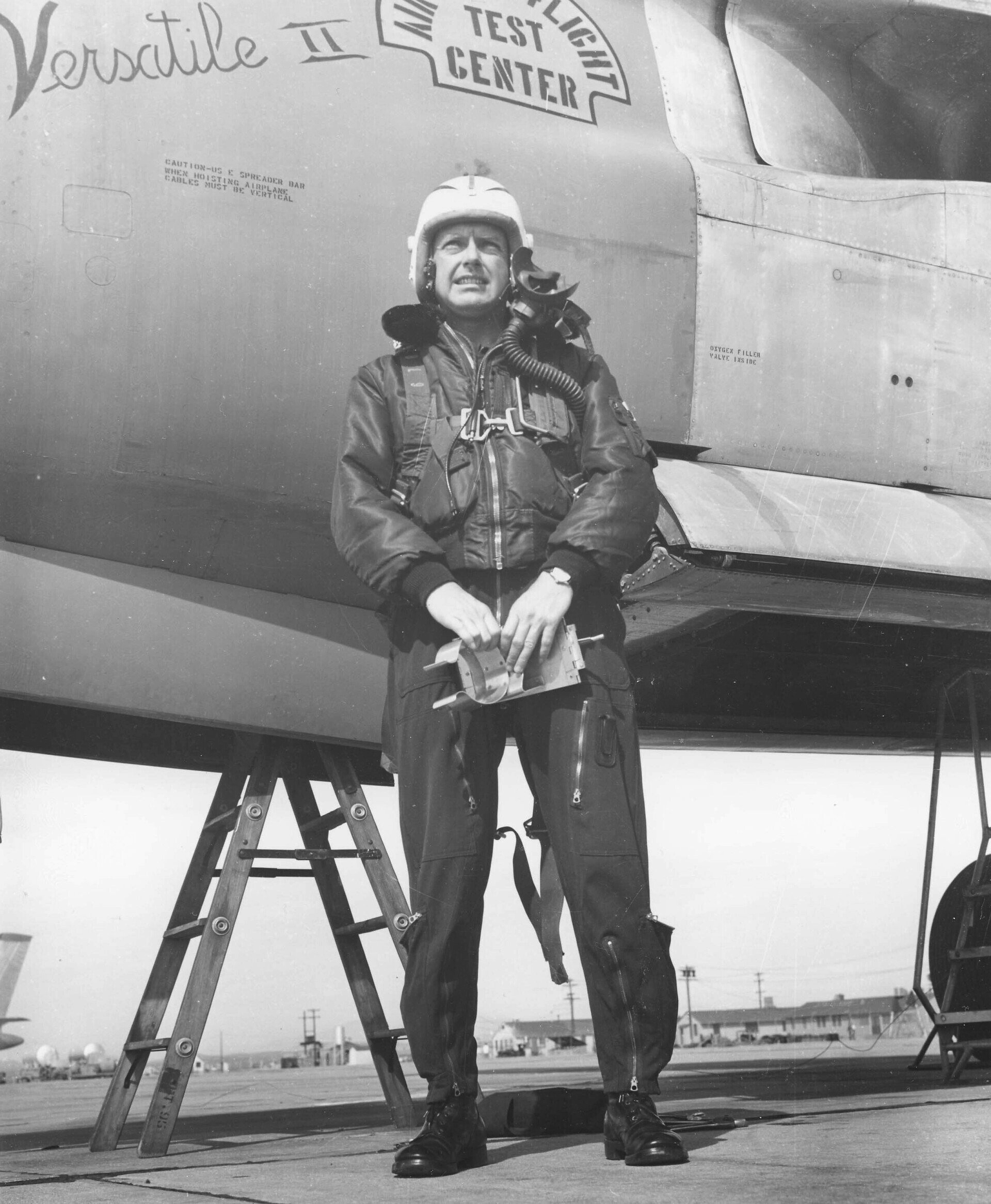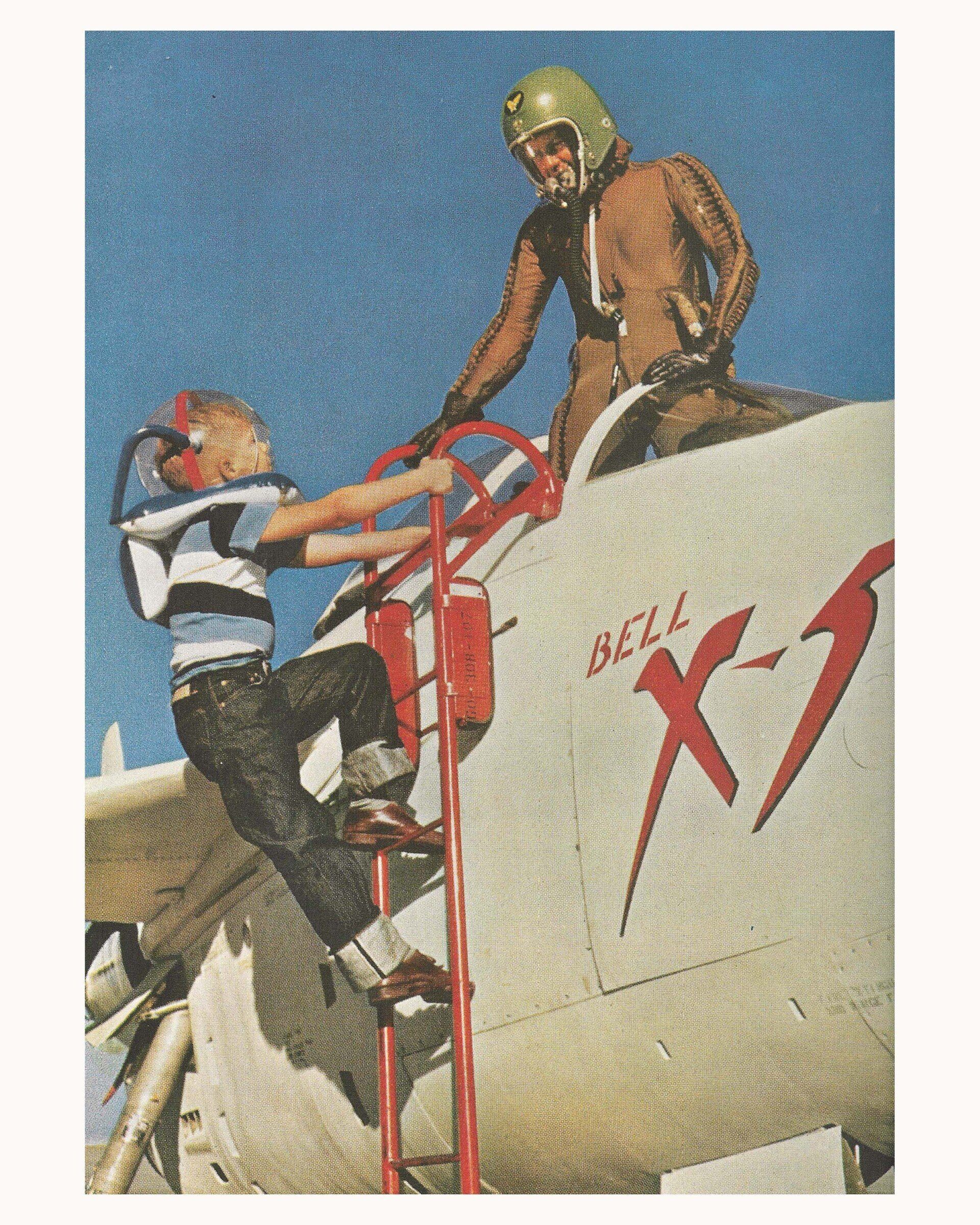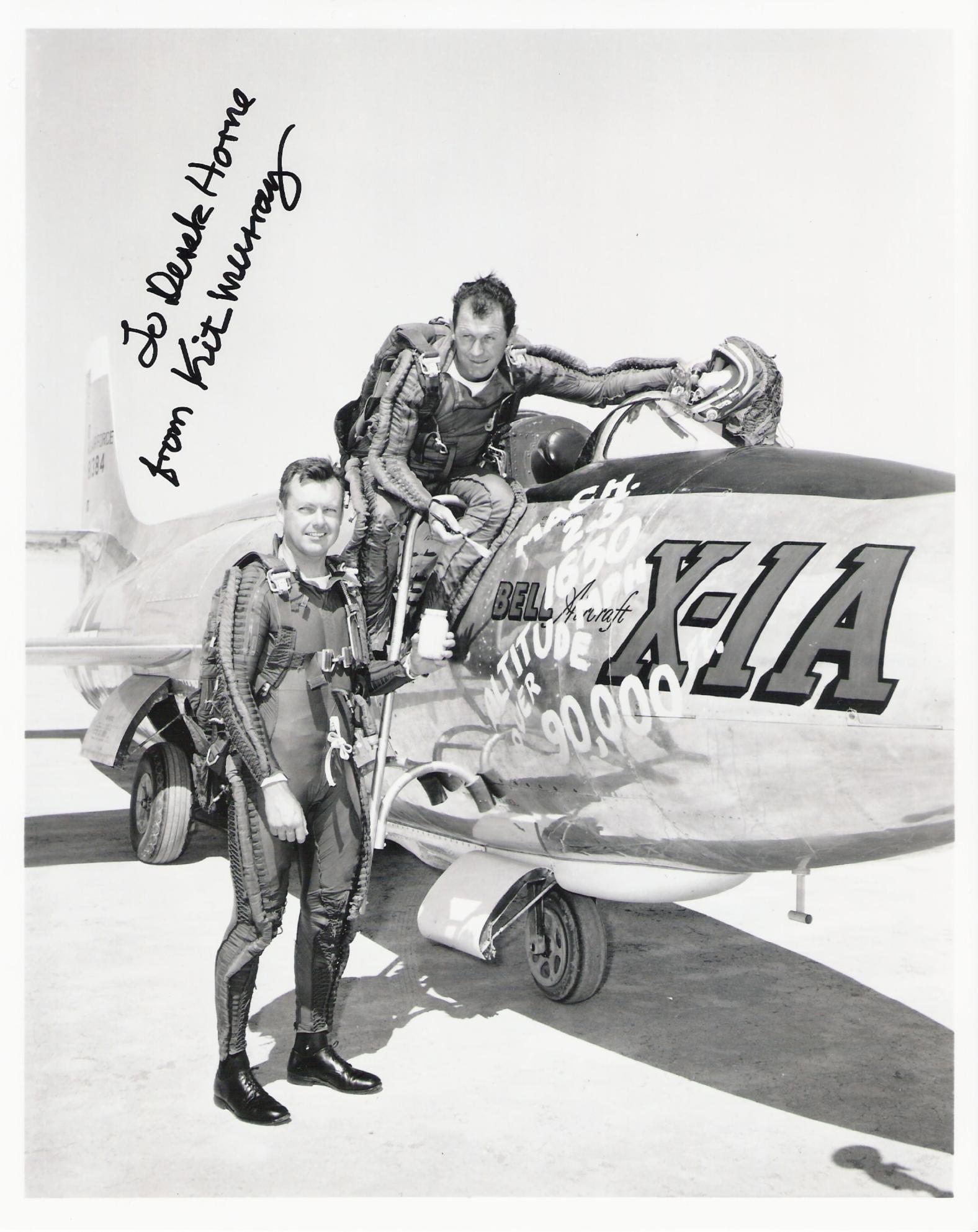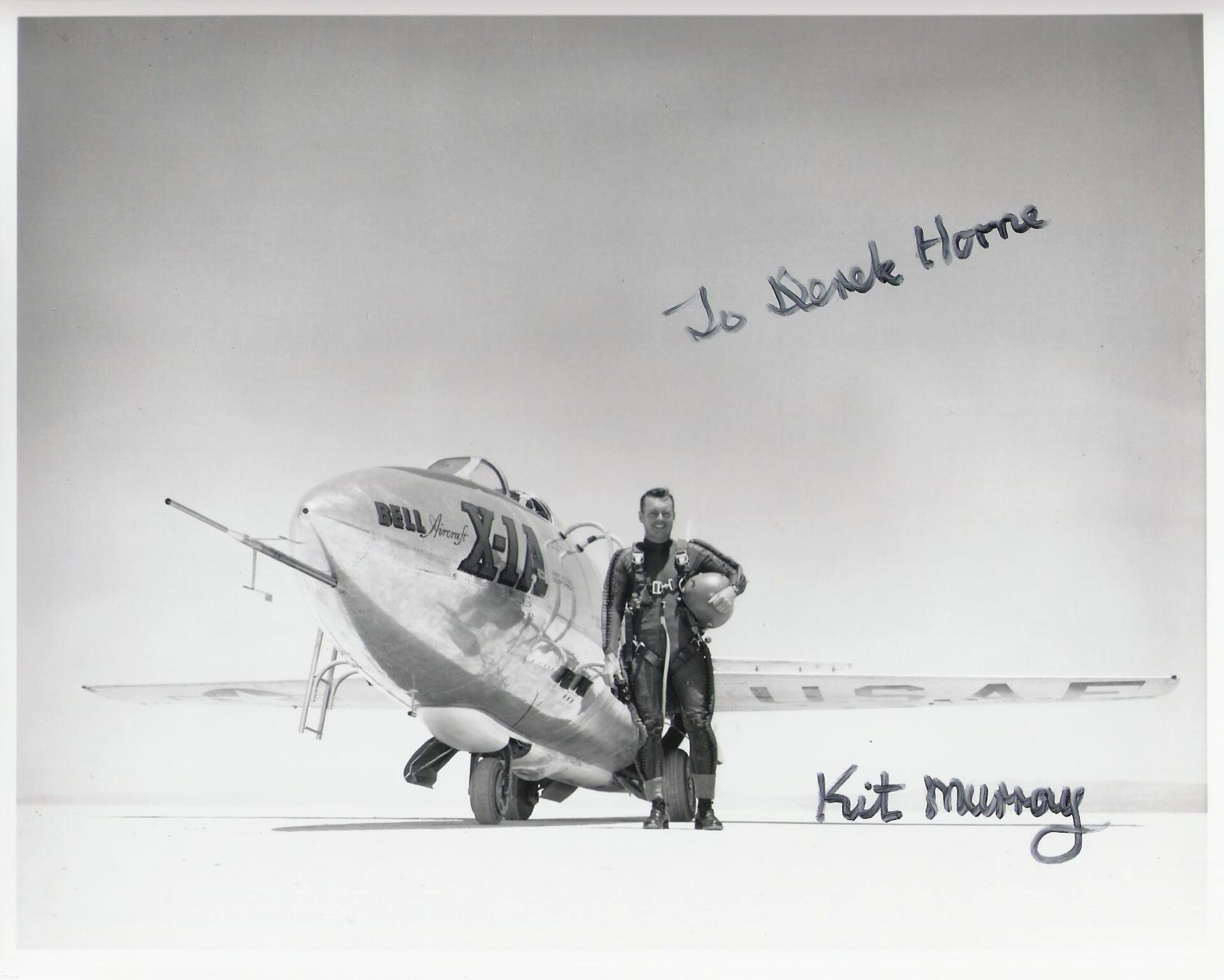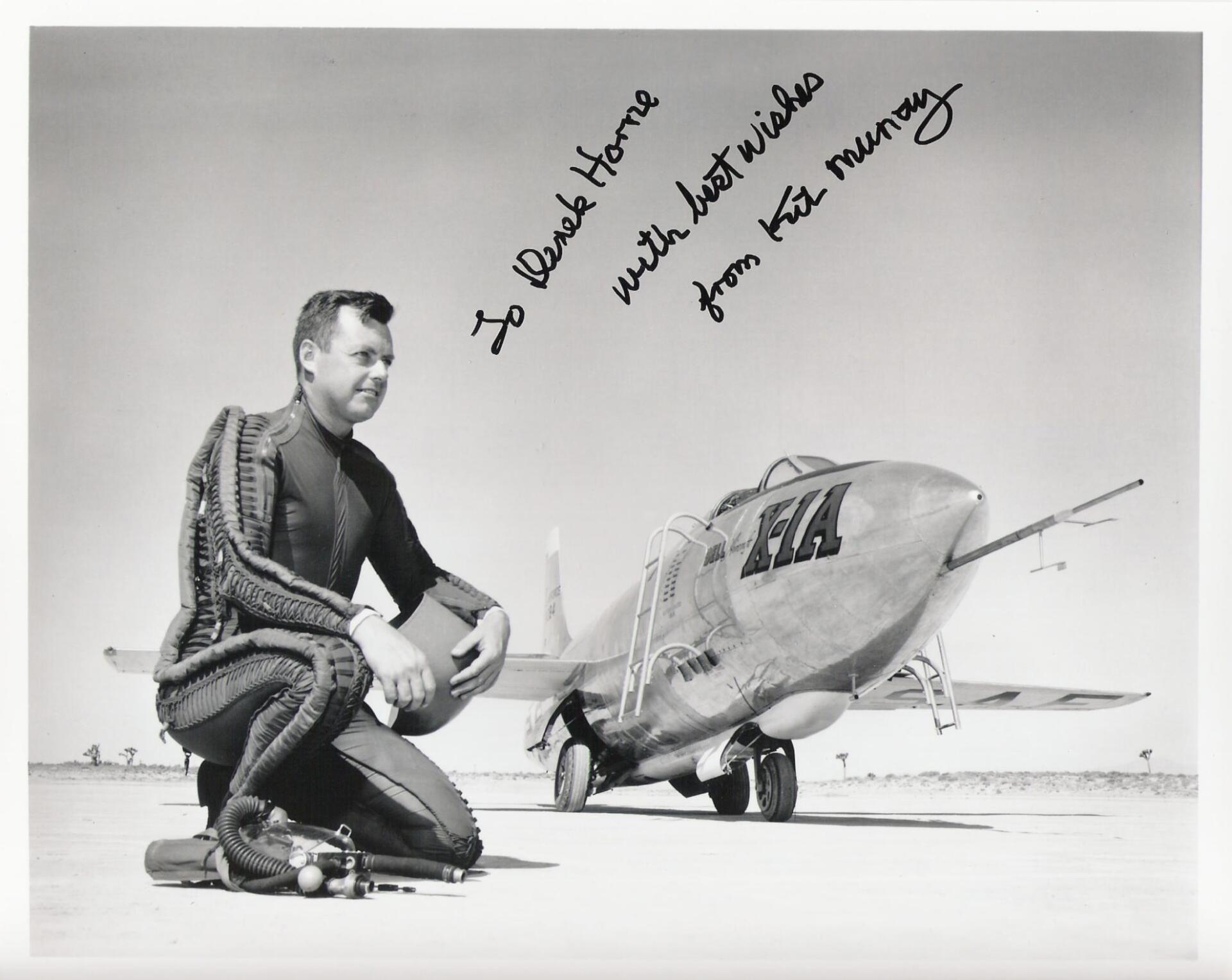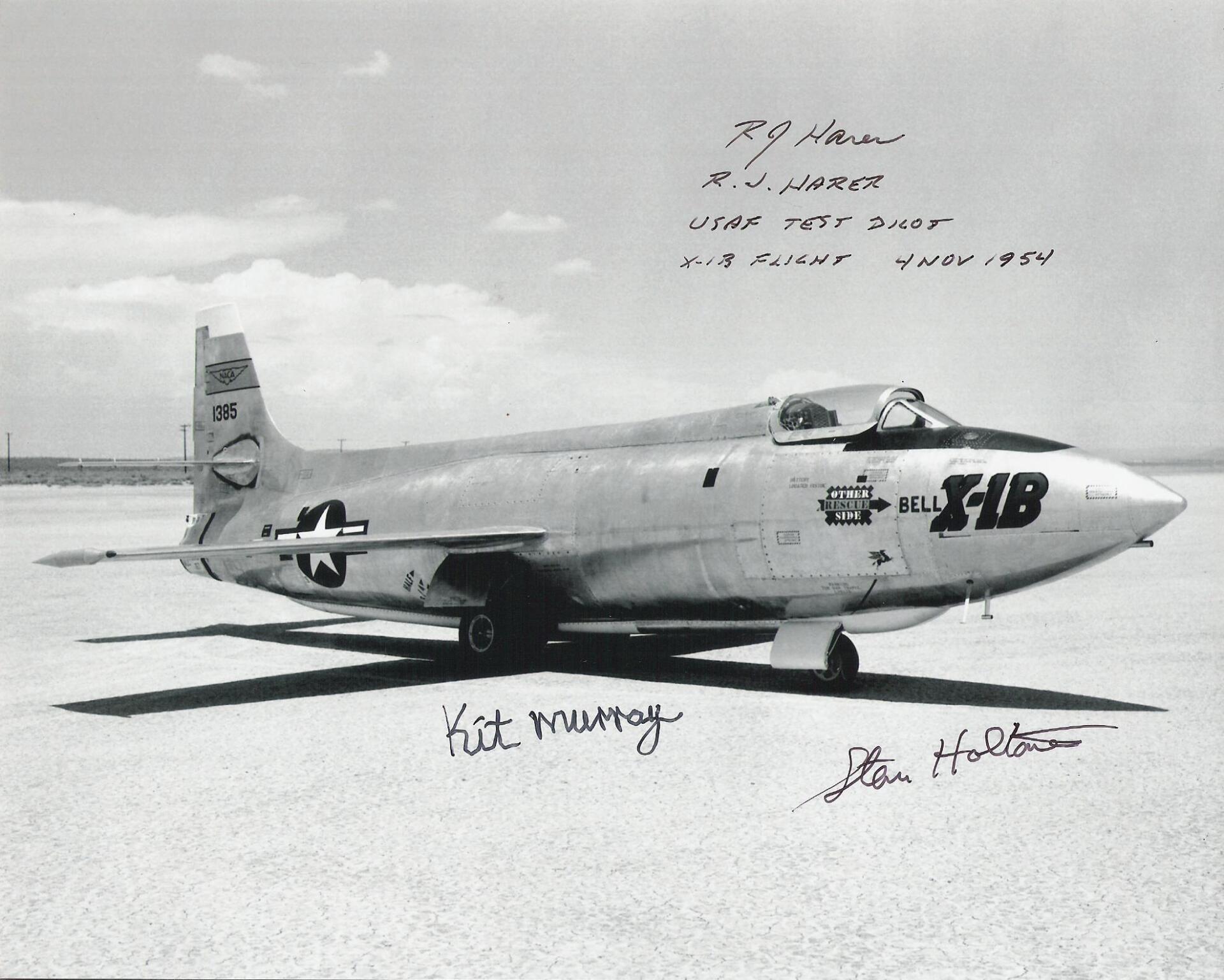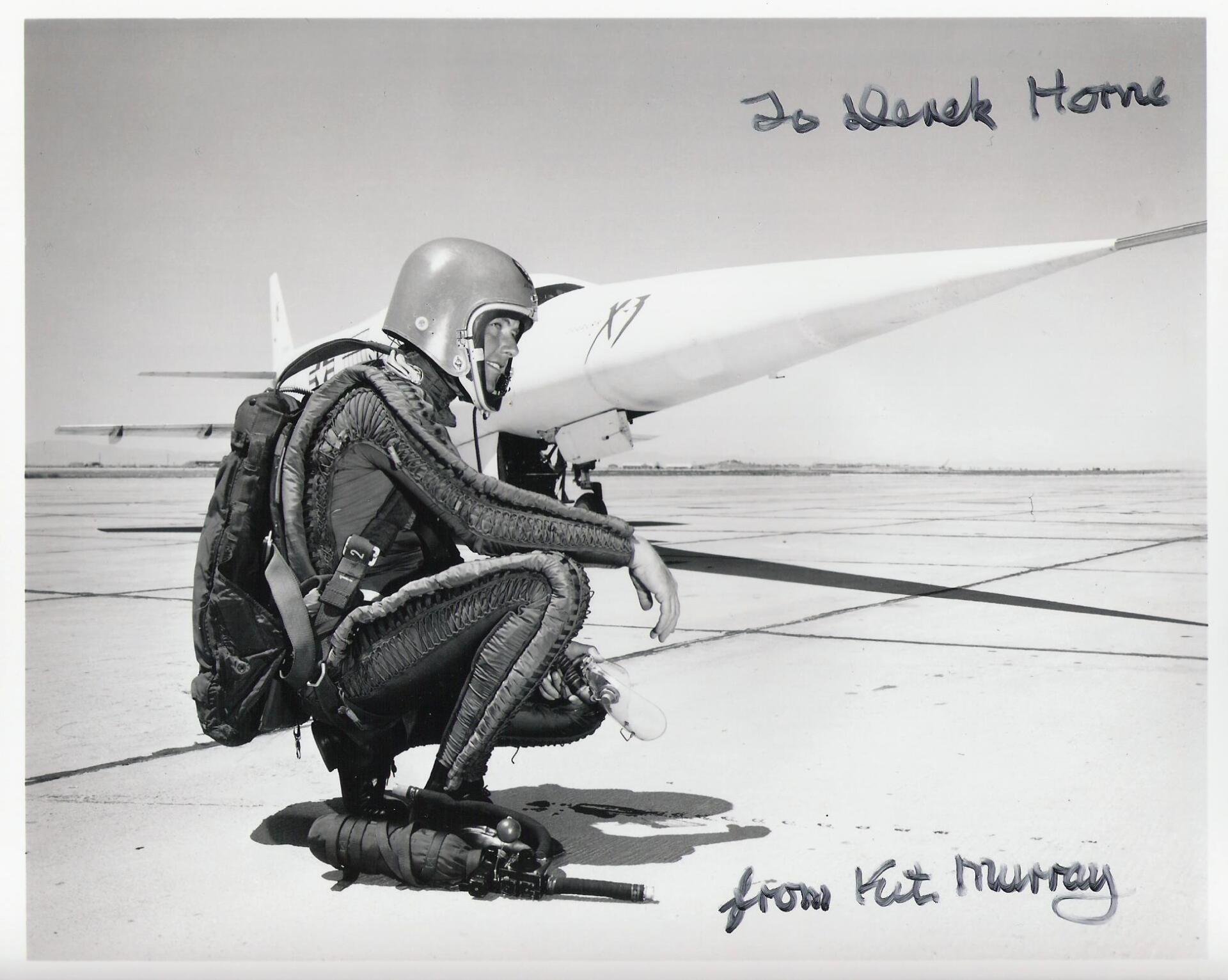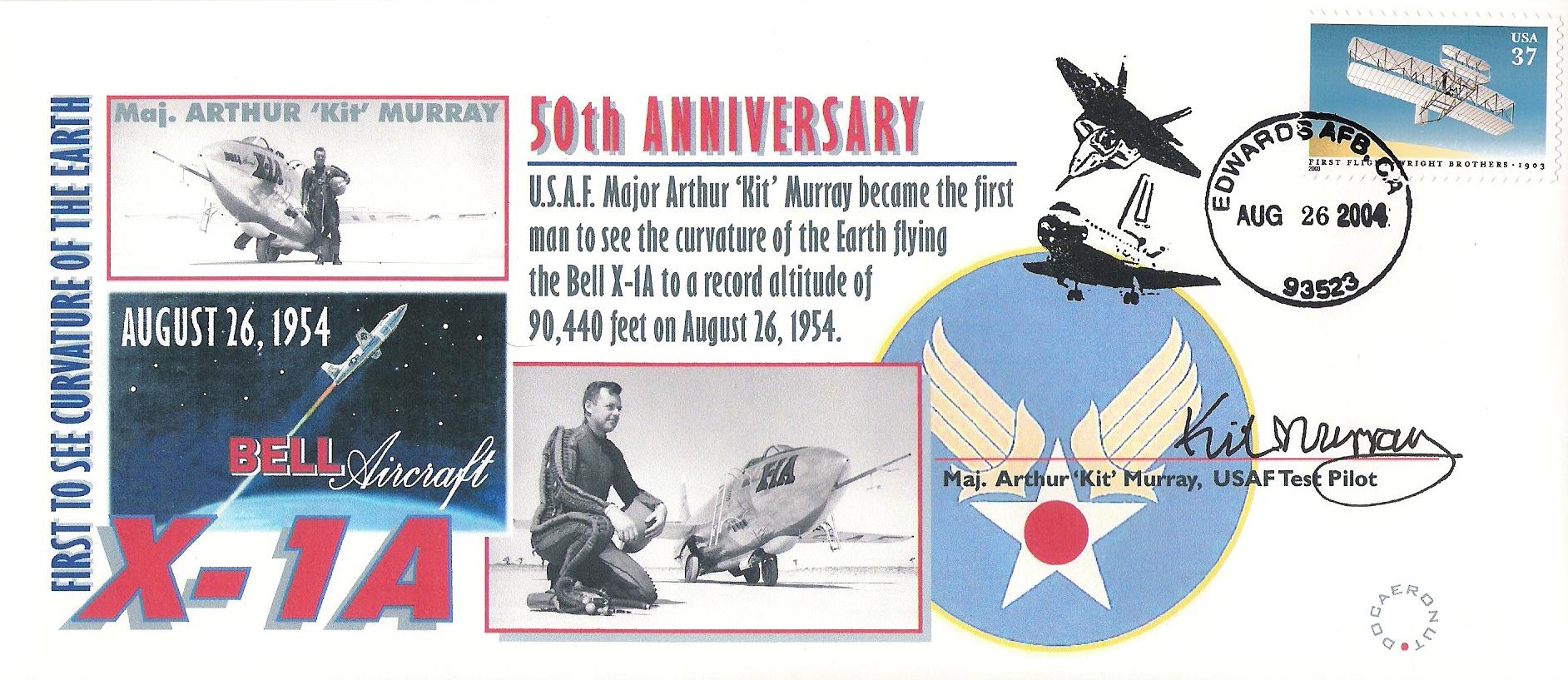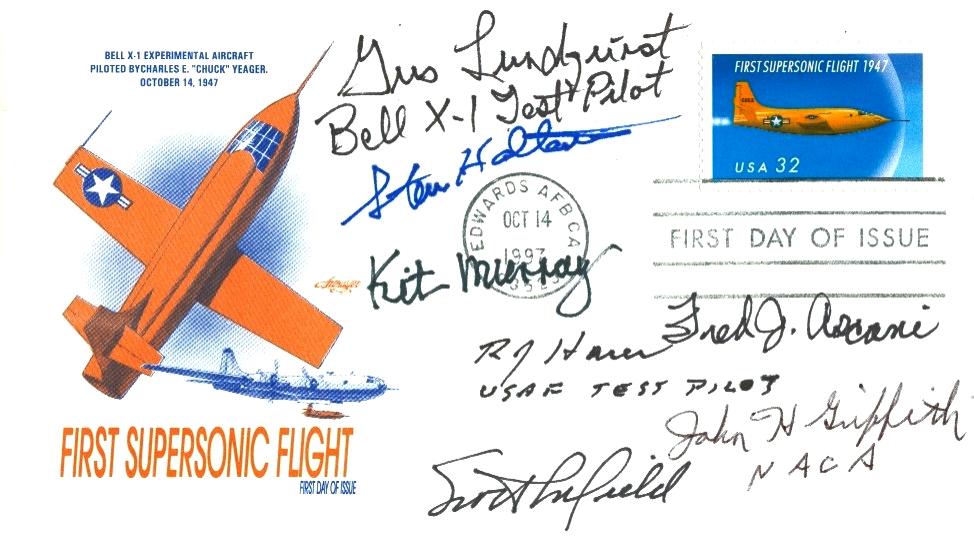Donald L. Mallick
Donald Mallick was born in Sewickley, Pa., on October 4, 1930. In 1957 he graduated with honors from the University of Florida. Mallick served as a pilot in the US Navy after two years of undergraduate work at Penn State. Mallick first joined NASA's predecessor, the National Advisory Committee for Aeronautics (NACA) in 1957, at the Langley Aeronautical Laboratory (later re-designated Langley Research Center), Hampton, VA, as a research pilot. During that period Mallick participated in numerous VSTOL (Very Short Take Off and Landing) type research programs, including the VERTOL (Vertical Take Off and Landing) VZ-2 aircraft.
He transferred to the Flight Research Center in 1963, remaining there until April 3, 1987. During the mid-1960s Mallick was the chief project pilot on NASA's Lunar Landing Research Vehicle (LLRV). The LLRV helped develop the piloting procedures that were used during the final portions of the lunar landings. Mallick made a flight in NASA's lightweight M2-F1 Lifting Body on January 30, 1964. Mallick became Chief Pilot in 1967. He was project pilot on both the YF-12 and XB-70A research programs of the late 1960s and 1970s.
Mallick later flew on the NASA Lockheed JetStar Prop-Fan, and Laminar Flow Wing programs. Mallick was a research pilot with NASA Dryden Flight Research Center from 1963 until 1981. He later became Deputy Chief for the Dryden Aircraft Operations Division, serving in a management position with some limited research and support flying. In 2004 Mallick had his autobiography "THE SMELL OF KEROSENE, A Test Pilot's Odyssey" published by NASA. It can be downloaded as a PDF from NASA's website or purchased as a large format paperback from Amazon or other reputable retailers. Click here for Donald Mallick's NASA Dryden FRC biography.
John Manke - (1931-2019)
John Manke was the Director of Flight Operations for the National Aeronautics and Space Administration's Ames Research Center, including the Ames facility at Moffett Field, California and Dryden Flight Research Facility, Edwards, California. He also served as Site Manager for Dryden, the nation's premiere flight test organization. As Director of Flight Operations, he was responsible for the conduct of aeronautical flight research with some of the most advanced aircraft in the country at time. Manke served as Chief of Flight Operations for Dryden Flight Research Center prior to its integration with Ames Research Center in October 1981.
Before becoming Chief of Flight Operations, Manke served as a civilian research pilot for Dryden, testing wingless lifting bodies that demonstrated the ability to manoeuvre and safely land a vehicle with a shape that was designed for space flight. This research provided data and flight techniques used for the Space Shuttle Orbiter. Lifting bodies flown by Manke included the X-24B, X-24A, HL-10, and the M2-F3. He made the first supersonic flight in a lifting body and the first landing of a lifting body on a hard-surface runway.
Born in Selby, South Dakota, November 13, 1931, Manke attended the University of South Dakota before joining the U.S. Navy in 1951. He was selected for the NROTC program and graduated from Marquette University, Milwaukee, Wisconsin, in 1956 with a Bachelor's Degree in electrical engineering. Following graduation Manke entered flight training and served as a fighter pilot with the U.S. Marine Corps. Leaving the service in 1960, and prior to joining NASA, he worked for Honeywell Corp. as a test engineer.
A member of the Society of Experimental Test Pilots, Manke is married to the former Marilyn Sherman. The couple and their five children reside in Lancaster, California. In his spare time, he has built and flown his own light airplanes. Please take time to read John Manke's NASA Dryden biography. Mr Manke sadly passed away 31st January 2019.
John B. "Jack" McKay - (1922-1975)
Born on December 8, 1922, in Portsmouth, Va., Jack McKay graduated from Virginia Polytechnic Institute in 195O with a Bachelor of Science degree in Aeronautical Engineering. During World War II he served as a Navy pilot in the Pacific Theatre, earning the Air Medal and Two Clusters, and a Presidential Unit Citation. McKay was with the NACA and NASA from February 8,1951 until October 5, 1971 and specialized in high-speed flight research programs. He began as an NACA intern, but assumed pilot status on July 11, 1952. In addition to the X-l5, he flew such experimental aircraft as the D-558-1, D-558-2, X-lB, and the X-lE. He has also served as a research pilot on flight programs involving the F-100, F-102, F-104, and the F-107. Jack McKay was one of the first pilots assigned to the X-15 flight research program at NASA's Flight Research Center, Edwards, Calif. As a civilian research pilot and aeronautical engineer, he made 30 flights in X-15s from October 28, 1960, until September 8, 1966. His peak altitude was 295,600 feet, and his highest speed was 3863 mph (Mach 5.64).
On November 9th, 1962 Jack McKay was piloting the X-15. After launching from the B-52 mothership at 45,000 feet and lighting the XLR-99 rocket engine, McKay was radioed by Pete Knight, who was the flight communicator in the NASA control room, to check his throttle position. McKay verified it was at the full throttle position and was advised by Knight that the engine was only putting out 30 percent thrust. Knight radioed for a Mud Lake landing and McKay began a pre-planned series of actions to make an emergency landing. He shutdown the engine and set up the turning pattern to Mud Lake, jettisoning the anhydrous ammonia and liquid oxygen propellants along the way. The strut of the left main landing gear failed on touchdown turning the aircraft sideways and then rolling it upside down and trapping McKay in his seat with his head next to the lakebed surface.
Prior to rolling over McKay had the forethought to jettison the canopy. The emergency crew that was pre-stationed at the site immediately moved into action. The Air Force helicopter hovered over the X-15 blowing away the pungent fumes of the anhydrous ammonia still venting from the aircraft while the ground crew was able to dig a hole in the lakebed to provide enough clearance to extract McKay from the cockpit. McKay flew the X-15 again, but he was an inch shorter due to crushed vertebra. Jack McKay sadly passed away aged 53 on April 27, 1975; due in part to the injuries he suffered in the X-15 accident of November 9th, 1962. Please take time to read Jack McKay's biography on Wikipedia.
Corwin H. "Corky" Meyer - (1920-2011)
Corky Meyer was born May 14, 1920 in Springfield, Illinois. He attended the University of Illinois and the Massachusetts Institute of Technology. Meyer received his flight training, including commercial, instructor, instrument and multi-engine ratings, from the Civilian Pilot Training Program in 1940-1942. After serving as a trainee for Pan American Airways, Corky Meyer joined the Grumman Aircraft Engineering Corporation in 1942 with 423 flying hours as an experimental test pilot. Although he landed "wheels up" at the end of his first test flight, by 1944, he had risen to Senior Engineering Test Pilot.
Corky Meyer was the company's project pilot for the Hellcat, Tigercat, Bearcat, Panther, Jaguar, Tiger and the Mach II Super Tiger. He flew all of the high-performance aircraft made throughout the world in the 1940s, including the famed Japanese Zero. Corwin "Corky" H. Meyer tested and evaluated more than 125 different types of military and commercial jet and piston-engine aircraft during a 36-year career with Grumman Corporation. He was at Edwards Air Force Base from 1952-1956 as the head of all Grumman flight operations. He tested Grumman's first jet airplane, the XF9F-2 Panther in 1947 and in 1954 became the first civilian pilot to qualify aboard an aircraft carrier with jet airplanes. He also performed the first flights in the Avenger, Guardian, Panther, Jaguar, Tiger and the Mach II Super Tiger.
A founding member of the Society of Experimental Test Pilots, Meyer was honored with its James H. Doolittle Award in 1971. He was the 23rd man since 1911 to have been named an Honorary Naval Aviator and has been inducted into the Naval Carrier Test Pilots' Hall of Honor, the Wright Stuff Association - Wright Field World War II Test Pilots' Association, the Early and Pioneer Naval Aviators Association of Golden Eagles and the City of Lancaster's Aerospace Walk of Honor in 1999. Corky Meyer retired to Ocala, Florida. He has one daughter and two sons, both of whom he taught to fly. Looking back, Corky Meyer has no regrets, He said, "If I could go back to age 17 and do it all over again exactly as my life has happened, I would jump at the chance". Corky Meyer wrote and published "Corky Meyer's Flight Journal" in 2005. Its a tremendous read and is available from Amazon and other book stockists. Corwin Henry Meyer sadly passed away on 1st June 2011 in Naples, Florida, he was 91 years old.
Thomas C. "Tom" McMurtry - (1935-2015)
Born in Crawfordsville, Ind., on June 4, l935, McMurtry attended elementary school in Rockville, Indiana and received his Bachelor of Science degree in Mechanical Engineering from the University of Notre Dame in June 1957. A former U.S. Navy pilot and graduate of the U.S. Navy Test Pilot School, Patuxent River, Maryland, McMurtry was a consultant for Lockheed Corporation before joining NASA in 1967. Since joining NASA, McMurtry has been project pilot for the AD-1 Oblique Wing program, the F-15 Digital Electronic Engine Control (DEEC) project, the KC-135 Winglets project and the F-8 Supercritical Wing program for which he received NASA's Exceptional Service Medal. McMurtry was also co-project pilot on the F-8 Digital Fly-By-Wire program, and on several remotely piloted research vehicle programs such as the FAA/NASA 720 Controlled Impact Demonstration and the sub-scale F-15 spin research project.
On November 26, 1975, the X-24B lifting body dropped from the sky for the last time, piloted on this 36th flight by McMurtry. He also co-piloted the 747 Shuttle Carrier Aircraft as it transported the prototype Shuttle Enterprise on its first launch on August 12, 1977. In 1982, McMurtry received the Iven C. Kincheloe Award from the Society of Experimental Test Pilots for his contributions as project pilot on the AD-1 Oblique Wing program. In 1998 he was named as one of the honoree's at the City of Lancaster, California's ninth Aerospace Walk of Honor ceremonies. In 1999 he was awarded the NASA Distinguished Service Medal. Since becoming a pilot in 1958, McMurtry logged more than 11,000 hours of flying time. Besides the aircraft listed above, he has flown the U-2, the triple-sonic YF-12C, and the F-104. Read Tom McMurtry's official NASA biography. Mr McMurtry sadly passed away on 3rd January 2015, he was 79 years old.
Colonel Arthur "Kit" Murray USAF ret. - (1918-2011)
Arthur "Kit" Murray was instrumental in pioneering the techniques of air-to-air fuelling and the development of talk-down techniques for landing experimental aircraft. As a Flight Test Pilot at Edwards AFB, he flew programs on the X-1A and X-5, flew the X-4 and made the first powered flight on the X-1B. He developed control techniques in 13 semi-ballistic flights of the Bell X-1A at record altitudes.
In 1954, Murray flew the Bell X-1A to a new unofficial world altitude of 90,440 feet, becoming the first person to see the curvature of the earth. He rose to Chief of Programs Division charged with programming all Air Force Flight Test Center Projects. Murray managed the technical efforts and funds on NATO aircraft in Paris. He then served as Chief of the X-15 Project Office. He left the USAF in 1961 and joined Boeing where he managed Crew Integration for the X-20A Dyna Soar and the MOLAB.
Later, the became Boeing Manager of Requirements for Kennedy Space Center. In 1968 he joined Bell Helicopter where his duties involved market analysis and identification of future VTOL aircraft requirements. Kit Murray was honored by the Distinguished Flying Cross, Air Medal with eight clusters, Society of Experimental Test Pilots Fellowship, French Medal of the City of Paris and the Aerospace Walk of Honor (1996). Colonel Murray sadly passed away on 25th July 2011 from complications from Alzheimer's disease in Texas. Some years prior to his passing I along with a friend purchased a collection of letters on eBay from Kit to his first wife Elizabeth (Bee) from a relative of his first wife. Between us we split the collection but not before my friend Mark scanned all the letters (envelopes too) and put them into a book and sent them to Kit Murray. His 2nd wife Anne was overjoyed by our endeavours and it helped to put a bit of sparkle into Kit's eyes. In his latter years Kit was not an easy autograph to obtain but thanks to our endeavours Kit was only too happy to sign a few items for Mark & I.
In his letter from Muroc to Bee of October 16th 1947 he wrote:
"Hoover and Yeager have been helping out on the test flying the last two days and we’ve managed to snow the engineer under with data! Yeager and Hoover will probably be going back to Wright Sunday now that they’re waiting for data reduction on the XS-1. Chuck’s last flight might have been the one they were looking for! We’ll know more when all the data is reduced.
We’ve been getting some dope on the XB47 at Boeing here too. It hasn’t been decided who from the Bomber Section will fly it. However some flight test division pilot presently at Muroc will be designated to fly the P80 which will take photographs of the initial flights. There’s a pretty good chance that I will be that P80 pilot."
Absolutely fantastic and priceless content!! I plan to upload all the letters to this site in due course.
